




3 From the Editors
4 PIA VIC
Register for events at www.planning.org.au/vic or www.planning.org.au/tas

MARCH
16 2023 VIC International Women’s Day Breakfast
17 PIA Briefing: COP27: A Young Planner’s Perspective

23 PIA Victorian Young Planners Welcome to 2023 Drinks
24 2023 TAS International Women’s Day Breakfast – Hobart
31 PIA VIC Briefing: eComply: Digital Twin for Planning Compliance
Courses are in high demand, so get your registrations in now! To register, go to www.planning.org.au/vic
MARCH
23 Manage for Impact
28 Drafting Planning Scheme Series: How the planning scheme works
29 Drafting Planning Scheme Series: Drafting the MPS and PPF
30 Aboriginal Cultural Heritage – An overview of requirements and responsibilities for planners working in LGAs’
30 The A-Z of Planning
APRIL
PN Editorial Team: Robin Goodman, Danai Fadgyas, Julian Golby, Bella Iorlano, Catherine McNaughton, Fran Soler, Bunfu Yu.
Send Planning News correspondence to: pneditors@planning.org.au
Website: www.planning.org.au/vic
ISBN Number: 13292862
Planning News is the means by which members of PIA and others air their views. While we welcome vigorous debate, the views expressed in Planning News do not necessarily reflect the views of PIA and/or the Editors. Send other PIA correspondence to: vic@planning.org.au
Copyright © 2023 by Planning News, PIA Victoria Division
All rights reserved. A single article or part of an article in Planning News may be reproduced but it must be accompanied by an attribution which refers to both Planning News and the author, and a copy of the reproduction sent to pneditors@planning.org.au
Planning News Deadlines: 15th of the month for articles, 20th of the month for
Cover: Local living in Kensington.
4 Steer your Career – Part of the Quick Strategy Series from Upsides Training
5 Planning for development in water catchments
18 ResCode Practice
20 Reading People 101
26 Fearless Facilitation
Acknowledgement of Country: Planning News acknowledges the Traditional Owners and Custodians of the places where it is produced and read, recognising their continuing and unceded connection to lands, waters, and communities, and pays respects to their peoples, cultures, and languages, and to Elders past, present, and emerging.
Hansen Partnership are thrilled to let our clients, friends and colleagues know that from March 2023 we will be based at 150 Lonsdale St, part of the newly completed Wesley Place precinct, on Wurundjeri land.
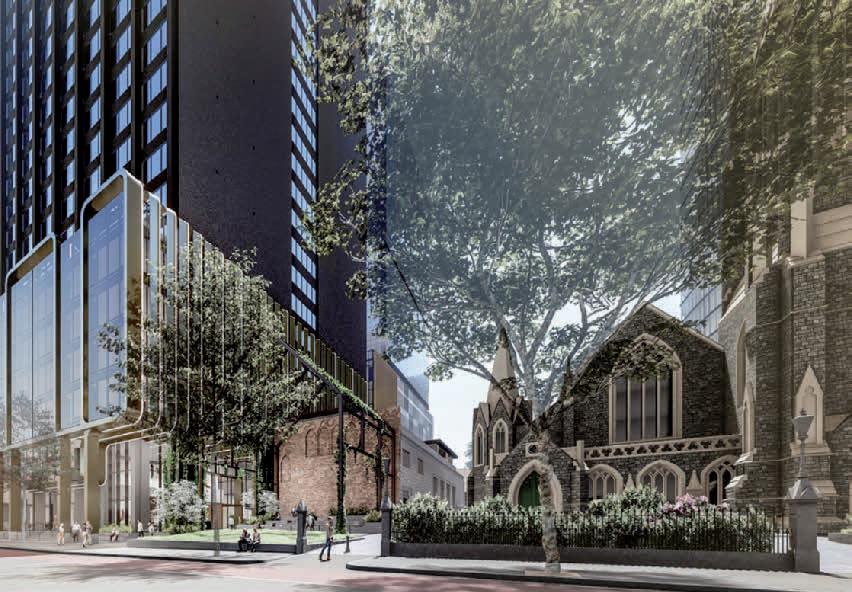
As we were involved in early planning for this precinct, it’s rewarding to have found a new home here. It’s a move to a space that aligns with our own values as the precinct showcases considered urban design and landscape outcomes, elevated communal and collaborative spaces for our team, and climate change related contemporary art.
We look forward to welcoming you to our new space!

Well, who would have thought that online conspiracy promoters would target a planning policy as unthreatening as the 20 minute neighbourhood – and that they would manage to whip up community fear? I’m sure it is difficult for most of us to comprehend what people could find frightening about the now familiar notion of well-serviced local suburbs, such as the one featured on our cover..
On first hearing that an outer Melbourne council meeting was stormed by residents demanding answers about the 20 minute strategy I assumed it was because the delivery was too slow. That they were demanding more shops, libraries and community centres. Or more bike paths. Or perhaps better public transport, or more childcare. But, amazingly, they were apparently concerned that increased local options might mean a mandated return to lock downs, and/ or increased surveillance.
This issue, which caused the closure of a Yarra Ranges Council meeting in January, is written up in this issue on page 8, and has received substantial attention in the press recently. Much of this coverage has focussed on the international protests around what is known as the 15 minute city in Paris. (European cities have greater density and people therefore expect shorter travel times). The Mayor of Paris Anne Hidalgo promoted the 15 minute city in her reelection campaign in 2020, and appears to be committed to its implementation with the appointment of a dedicated Commissioner. Her City of Proximities has four principles of proximity, diversity, density and ubiquity.
Surprisingly, not much of the coverage has recognised Melbourne as being an early adopter of the concept, as it first appeared in the first version of Plan Melbourne in 2014. “20-minute neighbourhoods are places where you have access to local shops, schools, parks, jobs and a range of community services within a 20-minute trip from your front door”, the first iteration of the strategy said.
Instead, Paris is widely credited with leading the way. A BBC article in 2021 said as much: “With Paris leading the way, other cities around the world have been enticed by this model for resilient, vibrant communities. Madrid, Milan, Ottawa and Seattle are among those to have declared plans to copy its approach. Melbourne has adopted a long-term strategic plan for 20-minute neighbourhoods.”1
Yes, Melbourne has a long-term plan – almost a decade old – promoting 20 minute neighbourhoods. But aside from the recent protests, what has been its impact? How much has it contributed to our ability to live locally? Maybe Melbourne is not getting the credit for leading the way on this planning goal because nothing much has happened to make it a reality. Implementation has always been planning’s Achilles heel in metropolitan planning in Melbourne.
The everyday practice of planning, like many occupations, can often be task oriented, with the focus on a good completion of whatever the current project might be. But there is of course a step before that, of determining whether
the project being undertaken is worth doing in the first place. The general test that should be applied to determine this is whether it will be of overall community benefit, and whether it is in the public interest. This is not always easy, as there are multiple and diverse publics, whose interests may not be the same. It can be complex and controversial, and when issues become political it requires a certain amount of bravery to step into the debate.
This is exactly what planners are required to do however, not simply mediate in disputes for an acceptable outcome, but promote good planning principles based on the public interest. PIA, as the representatives of the planning profession, has a particular responsibility to step into the fray promoting good planning. But how should this be determined?
Fortunately, the PIA Victoria Divisional Committee, led by Patrick Fensham, have prepared a Public Interest Framework to guide its work. This framework is intended to be used as a reference for engagement by PIA when it’s determining its public position on issues. However, it could have wider use than that. Just reading it is thought provoking and I’m sure that many readers will find it a useful checklist to go through when assessing the value of a plan or project. Congratulations to all involved.
Following our consultation with readers through a survey late last year, the PN editorial team held an open workshop with interested PN readers to discuss some possible future directions for our journal in February. It was terrific to get the input of about twenty Planning News enthusiasts and we are currently working through some of the suggestions that arose. We will report back in some more detail over the next couple of months but rest assured the future of our journal is bright. As always, please send through any feedback, thoughts or suggestions to pneditors@planning.org.au
1 https://www.bbc.com/worklife/article/20201214-how15-minute-cities-will-change-the-way-we-socialise
Welcome to our new members and congratulations to elevating members
PIA (Assoc) Julia Thomspon, Yilin Li, Thomas Sanderson, Ciaran Tomlin, Jessica Woods, Matilda Asser, Robyn Neal, Caterina Sottile, Ella Anderson, Rechelle Brookes, Umaiyal Kamalaneshan, Emily Williams, Phoebe Wilson, Sarah Saxon, Kirby OBrien, Robert Doherty, Jiao Yang, Aaron Burness, Nany Mashi Prak.
MPIA Olivia Cootes, Tendai Mhasho, Tracey Simmons, Shiva Malekfarnoud, Rachael Hudson, Peter Murrell, Redento Recio, Alisanne Boag, Matthew Simmons.
PIA (Assoc) Benjamin Allen, Anna Williams, Andy Low, Heramb Marathe, Ngoc Dao Nguyen.
MPIA Allan Brooks, Salome Romero.
I trust everyone has settled back into the swing of things in 2023.
The new Victorian Committee has confirmed its work plan and the three subcommittees have started locking in events, outreach work and building on our advocacy priorities from last year. Actions will continue to revolve around the themes prioritised last year of climate change, housing and regional planning. They will continue to be a focus of our advocacy this year.
We are also looking more broadly at strategic planning processes and the interactions between the planning system and cultural heritage values. We will be advocating for principled planning system reforms to ensure that good strategic planning is prioritised and well resourced.
Our first priority however is meeting with Ministers to promote these issues. We will also continue to work with other peak bodies to advance policy change, particularly in relation to climate change and essential housing.
The existing research strategy will be updated, building on the work between PIA and RMIT over the last few years, as we look to expand our relationship with additional research institutions.
We will be looking for further opportunities for continuous learning and development to support planners at all stages of their career. This will include the reinvigoration of lunchtime briefings on current topics to keep planners updated. We have currently released registrations for our first VIC briefing,
 Michael Purves MPIA
Michael Purves MPIA

This will be a big year for the planning system in Tasmania. The pressure for reform of our system was highlighted by the recent ABS data and various population projections, which suggest that Tasmania will hit its 2050 population target about 18 years earlier than expected. While many of us have been dealing with that growth on the ground, this recognition by the state is welcomed.
The Tasmanian Population Strategy is under review and PIA (Tas) will be making a submission to this. The consultation paper talks about many aspects of the planning system and recognises that the response to ageing, increased migration and the dispersal of population across the various lifestyle regions within the state will have a significant impact on how we live.
Housing affordability and availability is our most frequent indicator of that change and the impacts these changes can have to our way of life, and requires a strategic response from Government and industry to affect change. On a more local level, traffic impacts our movements on a daily basis. How will things like our urban settlements and future transport systems be managed to maintain those factors that make the Tasmanian way of life so enjoyable to us and desirable to everyone who wants to move here?
The submissions on the Tasmanian Planning Policies were reviewed by the State towards the end of last year. The Guidelines for the Regional Land Use Strategies are out for consultation.
eComply: Digital Twin for Planning Compliance. Go to the events page on the PIA website to register. We are also reviewing how PIA can support local government and offer services tailored to local government’s needs.
More detailed articles about the sub-committee’s work are included in this edition of planning news, go to pages 5 & 9.
I also encourage you to review PIA’s national position on housing. Advocacy around this topic is important with the Commonwealth government prioritising well-located affordable housing.
Scan


This year we will coordinate events and forums around the advocacy themes, in a range of metropolitan and regional forums, with a focus on careers development. This year you can also expect events from Victoria Young Planners and Victoria Women’s Planning Network.
Coming up on March 16 is the VIC International Women’s Day Breakfast! This event is a favourite for many and a chance to celebrate the achievements of women in planning. Michelle Redfern, a leader in female empowerment in Australia, will be addressing this year’s IWD theme #EmbraceEquity by speaking on The State of the Nation for Working Women: What organisations must do about levelling the playing field for women. Don’t miss out on what is sure to be an insightful morning.
The Policies are an essential and critical part of the planning system that we have not had in any meaningful way for some time. Current Policies are dated and difficult to use. They will be delivered through the Regional Land Use Strategies and planning scheme, so we will be keen to understand how they were revised in response to the submissions.
A framework for Implementation is critical to address inefficiencies that currently require every assessment to establish a framework to deal with all of the requirements of the existing policies and strategies. Such structural inefficiencies and uncertainty increases the cost of assessments under the planning system to all parties, from the State right through to the final users.
The SPO advises that review of the State Planning Provisions will continue. If you haven’t already done so, I suggest you subscribe to the SPO newsletter service to stay updated on all these matters.
Our first Division Committee meeting set out work plan for this year. If you have any questions, contact me or any of your committee members.
Finally, it’s 4 months until the end of the financial year. We need to plan the PIA PLANET courses that we will each be doing, and get the tax deductions sorted. More info is on the Events page of the PIA website.
Happy planning everyone!
Patrick Fensham MPIA (Fellow) and Jane Keddie MPIA
PIA is Australia’s trusted voice on planning and advocates for planning outcomes and processes that create vibrant cities and thriving communities. Victoria’s planning policy and advocacy work is led by the Policy and Advocacy Subcommittee (‘PAC’) and PIA Victoria’s Executive Officer, Carmel McCormack.
PAC has hit the ground running in 2023 with a strong pipeline of work. Our annual work plan builds on the momentum gained in 2022 in which PIA set down clear policy positions on regional strategic planning, responding to climate change, and increasing funding for social and affordable housing for take-up by the incoming government. The past year also saw PAC partner with our built environment industry partners (MAV, AILA and AIA) to issue a joint statement on climate change. With the Election now run and won, PAC will continue advocating for what planners need from the Victorian Government. This will include four existing advocacy priorities:
Planning for a changing climate
Better regional planning
Funding for essential housing
Principled planning system reform
PAC works closely with the rest of the PIA Victoria Committee and delivers both reactive and proactive advocacy based on our newly endorsed Public Interest Framework, which you can read more about in the article on page 6.
We are also looking to focus this year on highlighting the critical role of strategic planning and the power of this tool to ensure planning reforms deliver the best outcomes. A Position Paper on the importance of a Statewide strategic planning lens is on our agenda, alongside advocacy regarding a refresh of the current suite of Regional Growth Plans. Look out for our active contribution to game-changers such as the Suburban Rail Loop, the Commonwealth Games and the Plan Melbourne Refresh – not to mention keeping abreast of changes in the PlanTech space as well as the ongoing Treaty with Victoria’s Traditional Owners, and implications for planning processes in the State.
PAC will also continue to work with the rest of the PIA Victoria Committee to:
Build relationships with key decision makers as the ‘trusted voice for planning’.
Bring everyone, including our industry partners, to the table to support advocacy priorities.
Engage with our members through online and in-person events and publications such as Planning News
PIA Victoria’s PAC meets every month and welcomes your contributions, suggestions, issues of concern, opportunities and input into submissions.
PIA National and State-based position statements are also well worth a read and are available on the PIA website: www.planning.org.au
Patrick Fensham MPIA (Fellow) and Jane Keddie MPIA are Co-Convenors of the PIA VIC Policy & Advocacy Sub-committee.
The Partnership and Outreach sub-committee (POC) has been hard at work since convening in December 2022, to establish our work plan for the year ahead. We’ve got a big year but we (the 2023 POC) hope to continue to deliver the great work of POC members past.
Gabby provided a great summary of PIA Vic’s 2023 priorities in last month’s Planning News.
Building on this, we’ve put together a quick run-down of the three key priorities for POC in 2023 –
Priority 1: Review, update and expand our research strategy to build on relationships with tertiary institutions, to support planning as an evidenced-based practice.
Continuing the great work with RMIT University over the past four years, POC will continue to coordinate opportunities for collaboration with other tertiary institutions.
Expanding the reach our existing Memorandum of Understanding (MOU) we hope to support evidence-based practice to ensure planning in Victoria is informed by the latest research. We want to continue to establish PIA Vic as a reliable source for current planning research, building connections with academia and experts in planning.
Priority 2: Promote and support continuous learning at every career stage and knowledge sharing across allied sectors through revamped briefing sessions and events.
Acknowledging the interdisciplinary nature of the planning

profession, POC intends to take a ‘deep dive’ into VIC briefings and events past and present to identify opportunities for further training and professional development opportunities. We’ll be working alongside our Vic VYPs to strengthen engagement with student organisations and learning opportunities for young planners. We also plan to maximise opportunities for collaborating with other industry bodies and build connections with allied professions.
Priority 3: Strengthen value and perception of PIA within the public sector, including improving support for local (and state) government planners.
We want to build PIA Vic’s relationship with local and state government planners to ensure the association is serving the needs of planners from all industry sectors. We’ll be reaching out to other relevant industry groups to see how we can best support local government planners throughout their careers. We hope to be able to tailor events and briefings to meet the needs of local and state government planners, ensuring PIA Vic is suitably representing all of our members.
Please reach out to one of the POC committee members (Estella Qing, Nikki Hill, Kim Marriott, and me) if you’ve got any ideas on how PIA Vic could better support you in your career.
We look forward to an exciting 2023!
Adriano Zarosinki PIA (Assoc.) is the Convenor of PIA Victoria's Partnerships & Outreach Sub-committee He can be contacted at AZarosinski@tract.net.au.



Patrick Fensham, Policy and Advocacy co-convenor on the Victorian Division Committee has led the preparation of a Public Interest Framework. The Framework is intended to be used as a reference for engagement by PIA in making representations on public policy matters or engaging in public discourse. It will be a first ‘port of call’ for reacting or advocacy in relation to major public policy decisions and process proposals, rather than planning specific or site level decisions. The Public Interest Framework was endorsed by the Victoria Committee for the purpose of ‘road testing’ the framework over the next 12 months.
The PIA website contains the following description of ‘what is planning’:
It’s a dynamic field that’s all about improving quality of life and creating vibrant communities in which people love to live, work and play.
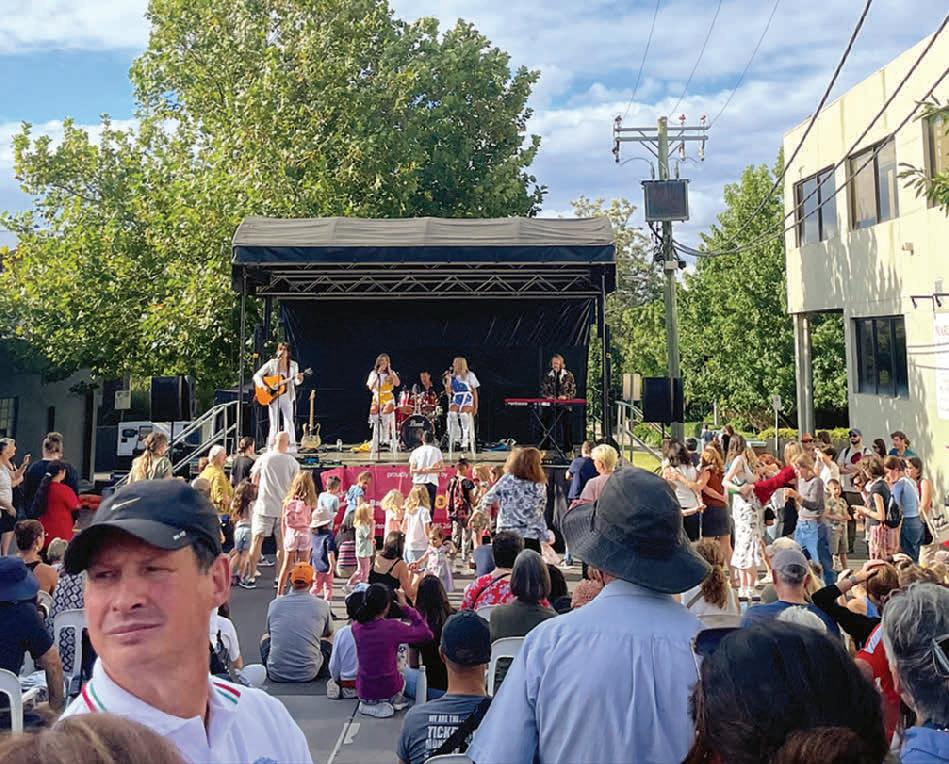
Good Planning:
• creates more accessible, equitable, efficient, healthy and beautiful communities
• provides adequate housing and services
• gives future generations realistic and fair opportunities
• helps communities, governments and the private sector envision how their community can grow and develop.
The above description of ‘good planning’ could be said to be a definition of how planning serves the public interest, but its focus is more on some specific and positive outcomes of the practice of planning.
This Public Interest Framework takes a step back and establishes a ‘first principles’ public interest foundation for considering or evaluating planning or spatial policy related decisions of government.
Planning is fundamentally about the public interest –and has been evolving from its 19th century incarnation addressing public health and intolerable impacts from noxious industries and inadequate housing towards a broader city shaping role. Public interest is the foundation that legitimizes setting spatial and land use controls as roles for government. Private sector players work in the public interest as they add to and fulfil the community’s strategy for a place.
Planning in the public interest is an activity that provides ‘guard rails’ for public and private sector decisions and investments: to moderate impacts and costs on the wider community (‘unpriced negative externalities’) now and in the future, protect natural resources and the biosphere that sustains us, maximise access to communally owned facilities and services (‘public goods’), and address gaps in the knowledge and information that affected parties might have to protect their interests (representing silent and even unknown wider community perspectives).
According to Chris Wheeler (Deputy NSW Ombudsman in 2016)
The ‘public interest’ is a term for which there is no single precise and immutable definition. The answer to the question “what is the public interest?” depends almost entirely on the circumstances in which the question arises. However, as a general concept it has been described as referring to considerations affecting the good order and functioning of the community and government affairs for the wellbeing of citizens. It has also been described as the ‘common good’. Equivalent concepts to the public interest have been discussed since at least the time of Aristotle (common interest), including by Aquinas and Rousseau (common good) and Locke (public good).
Two elements of this passage provide useful context for this Public Interest Framework.
Firstly, it points out there is no single definition of the public interest, that it depends on circumstance. A public interest perspective in a particular matter might vary from a local area compared to the state or national level. The public interest perspective is also likely to vary across generations (concern for the natural environment has shifted through time for example).
Secondly, it critically aligns public interest with ‘government for the wellbeing of citizens’ and the ‘common good’. This makes the ultimate and obvious point that public interest planning and decision-making is distinct from that which predominantly aligns with sectional, narrow or private interests.
Searle and Legacy1 identify the challenge for planning in representing or defending the public interest given the interplay between government policy and private interests, for example when it comes to decision-making for private tollways. ‘The vagaries of public interest mean that in being open to interpretation the public interest can be easily captured by the interests of capital and of ruling politicians’ (p.1).
This opinion alone highlights the importance of articulating a framework for public interest perspectives as a reference for planners – while fully recognising that contexts and circumstances may arise where its application is less relevant, or open to interpretation.
The Public Interest Framework is intended to be used as a reference for engagement by PIA in making representations on public policy matters or engaging in public discourse. It should be a first ‘port of call’ for reacting or advocacy in relation to major public policy decisions and process proposals, rather than planning specific or site level decisions.
This sentence should read: 'PIA’s What is Good Planning and The Value of Planning (which can both be found on the PIA website) assist at that level. This Public Interest Framework sits alongside these documents. PIA Policy Position Statements where available are likely to provide evidence and information to inform more detailed or substantive advocacy on particular issues.
It should be noted that spatial strategic plans are intended to reflect community values and spatially represent desired future outcomes for a place or region. As a result, Regional and Local Plans prepared using robust evidence and research and according to well-founded planning principles, subject to public engagement and consultation, and adopted by government, define a public interest ‘position’ for their subject areas and places. These plans therefore represent a foundational reference point for understanding the public interest for places.
The ‘tests’ outlined below are not to be considered absolute. Evidence may be developed which reveals a net community benefit from a decision which in the first instance would appear to ‘fail’ the test. Furthermore the scope and criteria are expected to evolve. Challenges, new propositions and amendments are anticipated.
The sustaining ecosphere is damaged or stock of environmental values now or for the future is reduced e.g.
• Where life-sustaining natural and environmental elements are degraded or damaged for good
• Where avoidable species / biodiversity etc loss is facilitated or allowed by a decision or development
• Where the stock of future environmental values is compromised for short term or private profit
Private interests are privileged and community interests undervalued e.g.
• Where the monopoly position of private interests or landowners are privileged over community perspectives and interests
• Where information is withheld from, or not available to, the public, and ultimately serves private interests
• Where decision making processes exclude community perspectives and privilege private interests or those that can afford to participate in them
• Where a decision clearly favours a private corporation or private interest over the wider community
Public assets alienated or captured to the exclusion of the wider community e.g.
• Where public assets are deployed for private benefit without sufficient (or any) compensation for the community
• Where public assets are sold or disposed of without considering their potential long-term value
Value created by planning is unreasonably captured by private interests e.g.
• Where the uplift in land value that planning decisions generate is unreasonably captured as an ‘unearned’ windfall for private benefit rather than equitably shared for public or community benefit
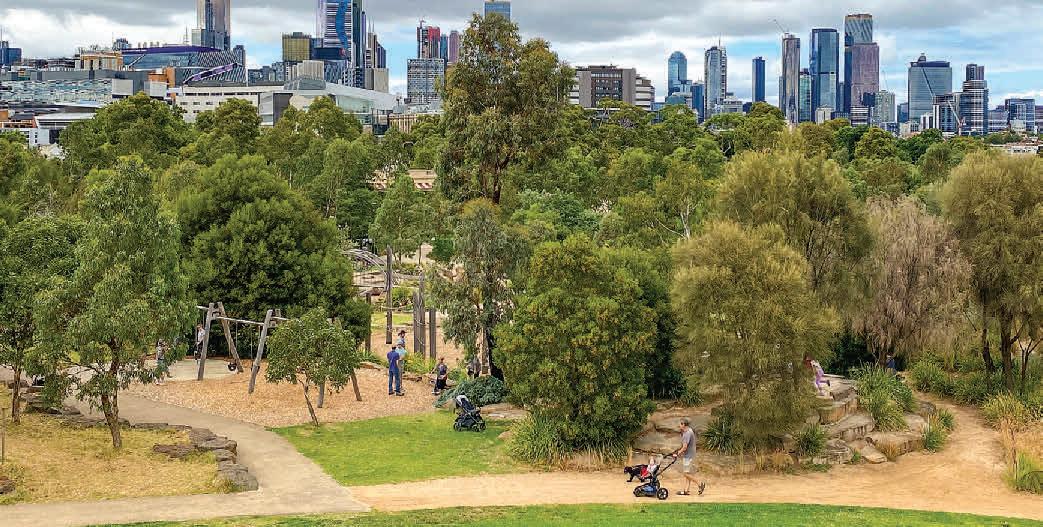
Public sector or key institutions that are custodians of or promote community interests are devalued e.g.
• Where a valued government institution which provides planning guidance, innovation and best practice is devalued or marginalised Adopted policy, accepted processes, strategic merit or evidence is ignored or set aside for opaque, unclear or apparently ‘political’ reasons e.g.
• Where adopted strategy, policy or evidence based plans are contravened or ignored in decisions and public investments
• Where the weight of evidence on planning and public interest merits is ignored in favour of an alternative decision without these merits
• Where insufficient evidence on the merits (net community benefit) of an investment in infrastructure or similar is available to justify the spending of public money
• Where processes meant to create confidence in planning (usually involving evidence and community consultation) are set aside or corrupted for unclear or political reasons
PIA should also and actively respond positively where the opposite is the case.
The Public Interest Framework is being circulated within the PIA community. Feedback should be sought via industry briefings and other forums. PIA committee and other members should utilise the framework when considering proposed policy positions from government or other issues that give rise to concern or warrant support. The Executive Officer will assist with the following steps (in the expectation of a response being issued in a timely manner, consistent with effectiveness).
Where the PI Framework is considered relevant the PIA Vic President or a nominated, delegated PIA member should prepare a response (e.g. communication with government, media statement, social media commentary) identifying how the PI Framework applies to the decision or the issue, expressing PIA’s concerns or support as relevant. The response should be directed through the most appropriate channel (e.g. media statement should be provided to media outlets or journalists.
The media statement could be supported by explanatory material providing more details about why the issue gives rise to the application of the PI Framework (though the intent of the PI Framework is that it provides supporting and adopted tests for ready reference without the need for detailed evidence or explanation).
Alliances with other peak bodies or agencies should also be sought to reinforce our advocacy (either for or against the proposal).
 Robin Goodman RPIA (Fellow)
Robin Goodman RPIA (Fellow)

It may be hard to believe that a concept as benign as the 20 minute neighbourhood, a central theme within Plan Melbourne, could become a source of fear or the target of protest. But that is indeed what has happened recently in an area of outer Melbourne.
A Yarra Ranges Council meeting on January 31 had to be abandoned, and police called to intervene, when more than 140 angry citizens attended demanding answers. The Mayor, Jim Childs, took the decision to close the meeting due as a result of the disruption from the public gallery. “Due to the safety of Councillors and staff, I felt I had no other course of action but to close the meeting to the public,” he said in a media release on the Yarra Ranges website.
According to a local paper report the community members at the meeting gave several reasons for being there, “however, most agreed that the council hadn’t answered questions regarding the 20-minute neighbourhoods and their fears the planning concept would be used to lock them into their homes and increase surveillance in the local area” (McKenzie, Star Mail, 1/2/23).
The article notes that “a woman, who attended the meeting to protest the 20-minute neighbourhood plans, said it has already caused people overseas to be locked in their homes. “You won’t own a house, you won’t own a car. You’re just a carbon footprint and a digital ID, you’re only allowed
to do what they tell you to,” she said.
“You’ll only be allowed within 20 minutes of your home. First, they’ll get you outside of your zones for 100 trips before eventually introducing lockdowns and tightening restrictions until it suits them. It’s not a conspiracy, it’s a real thing.”1
This extreme reaction to the widely accepted planning goal of making local neighbourhoods walkable and well-serviced neighbourhoods seems extraordinary. The 20 minute ideal is really about enabling better local living. However, like many unfounded rumours and far-fetched conspiracy theories, fear of the concept has been spread by social media and similar protests have been seen recently overseas. Somehow the notion of being able to access goods and services within a short distance has morphed into the fear that citizens will only be allowed to travel 15 or 20 minutes from their homes. This seems to be a combination of surveillance fear and post-lockdown trauma. Fuelled by postings like those of right-wing Canadian psychologist
Jordan Peterson, who tweeted on Jan 1 that “The idea that neighborhoods should be walkable is lovely. The idea that idiot tyrannical bureaucrats can decide by fiat where you’re “allowed” to drive is perhaps the worst imaginable perversion of that idea – and, make no mistake, it’s part of a well-documented plan.” Much of the contributions to
discussion which followed were (typically) not suitable for reproduction here.
According to a report in The Guardian by Oliver Wainwright (16/2/23) the matter has been raised at Westminster by Conservative MP Nick Fletcher. “Will the leader of the house please set aside time for a debate on the international socialist concept of so-called 15-minute cities and 20-minute neighbourhoods?”, he is quoted as asking in an ominous tone.
Wainwright’s Guardian article2 gives a good account of the rise of the 20 minute neighbourhood concept, and quotes the reaction of one of its well-known proponents, Paris based urbanist Carlos Morena, to its misuse. “Their lies are enormous” he says. They claim that “You will be locked in your neighbourhood; cameras will signal who can go out; if your mother lives in another neighbourhood, you will have to ask for permission to see her, and so on,” adding that they “sometimes post pictures of concentration camps.”
It may not be possible to allay the fears of all of the anxious and upset who write on social media or attend protests.
Melissa Thyer MPIA
The PIA committee in 2023, will be holding a series of events in regional Victoria. A broad range of issues will be explored from PIA’s election advocacy platform to career planning and professional development. These events will be coordinated with the Victorian Young Planners and Women’s Planning Network. Details will be released soon for our first session to be held in Geelong, in April!

Our popular Friday lunchtime sessions are back in 2023 with a great line-up of speakers in March! These sessions are a
And it is perhaps hard to predict what some people might perceive as threatening. As Wainwright amusingly put it in his Guardian article, “It’s like suggesting that public parks are part of a sinister plant-worshipping plot to demolish our homes and replace them with grass. Or that public transport is the work of a satanic bus cult”. First Dog on the Moon, The Guardian’s resident cartoonist, has a great take on the issue. Readers might like a copy for the office notice board.3
As usual, planners need to keep calm and keep on explaining the reasons for policies and strategies as clearly as possible. This is another reminder that the community is diverse and not everyone understands or agrees with what might seem to be uncontroversial and unthreatening.
1 https://lilydale.mailcommunity.com.au/2023/02/01/yarraranges-council-meeting-ajourned-after-disruptions/
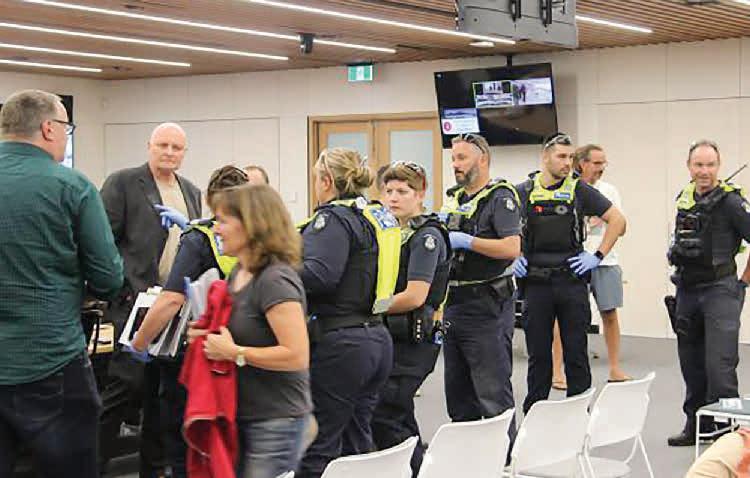
2 In praise of the ‘15-minute city’ – the mundane planning theory terrifying conspiracists | Oliver Wainwright | The Guardian 3 https://www.theguardian.com/commentisfree/2023/feb/22/ are-15-minute-cities-a-good-idea-or-the-work-of-un-greenistdevils?CMP=share_btn_link
great way to nourish the mind and expand your professional development over a relaxing Friday lunch! Please check Planning Matters or PIA website for further details and how to register.
Of course, PIA’s PLANET Course guide for 2023 has just been released, so check out what’s available for new and experienced planners! We also encourage everyone to come along to our PIA Victoria International Women’s Day Breakfast, a highlight on the Victorian calendar! Our guest speaker Michelle Redfern will be discussing the State of the Nation for Working Women: What organisations must do about levelling the playing field for women.
Melissa Thyer MPIA is the Convenor of PIA Victoria's Events Sub-Committee

sCode Practice | Statewide Stormwater Provisions in the Planning Scheme Assessing Appli vironmental Impact Assessment (EIA) | Preparing & Assessing a | Presentation Skills for Pl affic and Parking Assessments | Assessing Neighbourhood Character | Applying the Native V e Subdivision Process | Assessing Neighbourhood Character | Understanding Development sign Thinking Drawing | The A-Z of Planning | Environmental Impact Assessment (EIA) plying the Better Apartment Design Standards | Urban Design in Practice | Economics for P original Cultural Heritage- An overview of requirements and responsibilities for planners wor
nning Together Ways: an Indigenous intercultural approach | Heritage Planning | Infill Deve
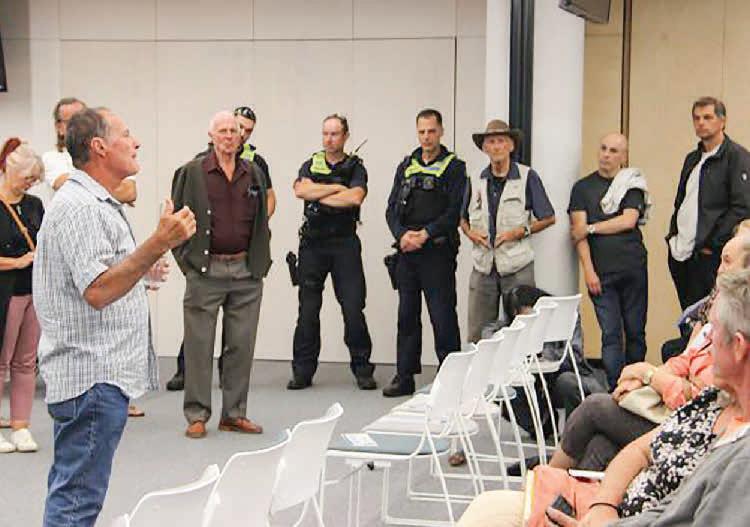


Urban sprawl and consequent traffic congestion are creating challenges for many small regional towns around Australia. In response, community advocates and the local municipal council for the central Victorian town of Castlemaine are seeking sustainable solutions. The global Smart Growth initiative is one approach to urban planning which could address environmental problems, housing issues and improve community well-being in regional towns.
Like many peri-urban towns, Castlemaine has transitioned from primarily supporting agriculture and manufacturing to attracting retirees or e-changers seeking a lifestyle alternative. Its proximity to larger centres like Melbourne and Bendigo has also made it a fertile ground for the growing geographical separation where many residents commute to workplaces in the commercial centres.1 However, the lack of reliable and affordable public transport to support this commute forces many people to choose to own a second car, creating infrastructure pressures borne by the community at large.2
Smart Growth principles combine the neotraditional and architectural focus of New Urbanism and community focus and land use planning perspectives to sustainable development. The movement is championed globally but it also attracts many academic and community-level discussions and criticisms.34 Concerns about smart growth include its idealising of the traditional township scale while reducing housing affordability, creating socially homogeneous enclaves, and failing to reverse car dependency.5 Some academics consider these criticisms to be related to normative aspirations and a failure of implementation which advocacy groups are starting to address.6
Community members in Castlemaine who are concerned with increasing housing sprawl are developing new forms of residential living. Infill projects include The Paddock Eco Village, set within remnant bushland 1.4 kilometres from the town centre and the proposed 40-dwelling social housing apartments over two sites in central Castlemaine. These projects are built on smart growth principles that seek to foster higher-density living and reduce car dependence. But how do they contribute to building the cohesive and socially integrated community notable in non-metropolitan settings? What forms of government policy support are required and what urban planning changes are needed in a regional setting?
The Paddock provides an alternative that could be viewed as the antithesis of the growing urban sprawl seen on the town’s fringe. However, its infill site of homogenous medium-density residential buildings is isolated within a neighbourhood of low-density housing. Consequently, the Paddock contributes to the increased density at neighbourhood scale. In addition, its inward-looking design
and dominance of surrounding car parking potentially discourages residents’ social interaction in the wider neighbourhood and promotes car use. Transportation options are limited as walking is not necessarily promoted since footpaths in the direction of the town centre are non-existent or poorly integrated. The capacity of the local roads within the neighbourhood will potentially struggle to cater to an increase in residents’ dependence on cars. Thus, although the Paddock presents some community characteristics of smart growth such as increasing density and creation of new open spaces, it does not fulfil some of the critical expectations for sustainable living due to its inability to promote walkability, alternative transport options and mixed land uses.
On the contrary, the proposed two-site social housing apartments in central Castlemaine provide a different setting for applying smart growth principles. Small town centres are community anchor points with the provision of convenience goods and personal services to meet the daily needs of residents.7 These apartments are to be situated close to centralised local and regional public transport, services and supermarkets, reducing or eliminating the need for residents to own a car. Both sites will sit over mixeduse developments, a Council car park and the local campus for Bendigo TAFE. This will enable better connectivity with the local employment centre as most trips can be made by walking. Along with the potential for mixed-use spaces, there is increased land use efficiency and the potential to meet residents’ social needs.8 The social housing apartments demonstrate important smart growth principles of higher density and reduced car dependency.
With the increasing trend of urban sprawling in small regional towns, communities like Castlemaine will need to make some important decisions on how they will deal with the associated challenges. New infill development projects
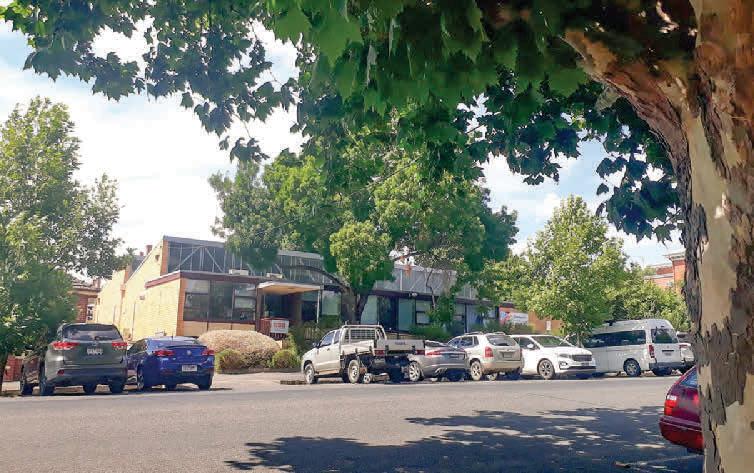
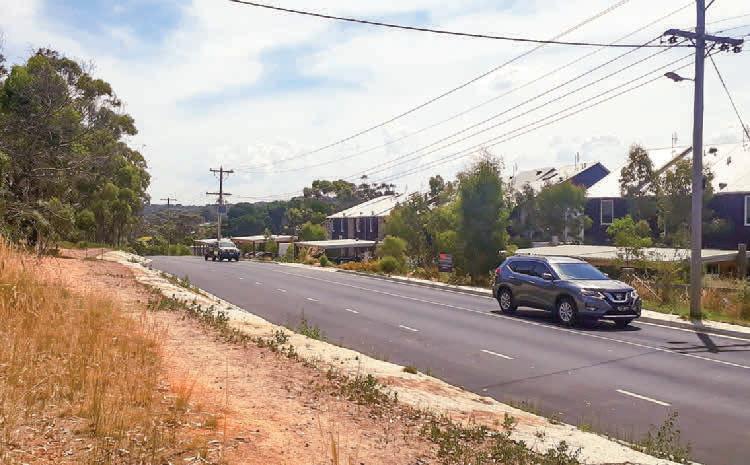
offer a great opportunity to accommodate part of the new growth inwardly without stressing resources for providing basic infrastructure facilities and services. New residential projects that create a range of housing options and foster convenient access to existing facilities and services ought to be promoted but its planning should consider which smart growth principles are most suitable to address local characteristics and the scale of development. Focusing on higher-density living and reduced car dependence is just one aspect of how smart growth helps to maintain liveability.
The application of policy to ensure good practice in regional towns needs multi-level government support. The local municipal council must invest further in footpaths and consciously integrate sustainable transportation choices to improve liveability throughout the town. Like many regional towns, Castlemaine would benefit from a state government review of its private operator bus network, under contract to Public Transport Victoria, to ensure better frequency and connectivity.
Regional planners must carefully analyse how urban sprawl and traffic congestion impact their communities. Some key smart growth characteristics are present in Castlemaine’s new and proposed developments. However, they need further policy support through a multi-government approach to avoid fragmented applications and improve regional urban expansion sustainability.

In the February issue of Planning News we began a new series of articles on planning education. The intention is to use this column to discuss some of the thorny issues that arise when considering how best to train planners for their future profession. However, breaching the wise maxim ‘start as you mean to continue’ I thought in this month’s article instead of focussing on a particular dilemma I would instead outline the role of PIA, the National Education Committee, and the education policy which guides the accreditation of tertiary programs. Gaining an understanding of how PIA sees planning education will be a good place to begin for readers who might continue to read the series of articles as they emerge.
Planning News readers are generally members of PIA and therefore we can assume understand the value of a professional association to represent planners and the profession and oversee their education. However, unlike professions such as architecture, medicine or teaching, a person does not have to be qualified in planning to become a planner. Some people come to planning jobs via other professions, such as engineering or surveying. Additionally, tertiary education providers do not have to acquire PIA accreditation for their programs and degrees. In practice the universities do however, as they want the tick of approval that signals a quality program to prospective students. This system generally works well I believe, and will continue to do so as long as the accreditation is rigorous, comprehensive and has integrity.
1 Wilkinson, L., & Butt, A. (2013). The prevalence and characteristics of commuting between small towns and regional centres in regional Victoria. Rural Society, 23(1), 75–86.
2 Testa, C., & Stevens, R. (2022). Victoria's regional cities are growing outwards but many question whether the sprawl is sustainable. ABC News. Retrieved from https://www.abc.net. au/news/2022-02-26/ballarat-population-growth-housingdevelopments-sprawl/100854260
3 Ellis, C. (2002). The New Urbanism: Critiques and Rebuttals. Journal of Urban Design, 7(3), 261–291.
4 Mehaffy, M. W., & Haas, T. (2020). New Urbanism in the New Urban Agenda: Threads of an Unfinished Reformation. Urban Planning, 5(4S3), 441–452.
5 Kim, J., & Larsen, K. (2017). Can new urbanism infill development contribute to social sustainability? The case of Orlando, Florida. Urban Studies (Edinburgh, Scotland), 54(16), 3843–3862.
6 Talen, E. (2000). New Urbanism and the Culture of Criticism. Urban Geography, 21(4), 318–341.
7 Falconer, R., Newman, P., & Giles-Corti, B. (2010). Is practice aligned with the principles? Implementing New Urbanism in Perth, Western Australia. Transport Policy, 17(5), 287–294.
8 Wey, W. M., & Hsu, J. (2014). New Urbanism and Smart Growth: Toward achieving a smart National Taipei University District. Habitat International, 42, 164–174.
So how does the accreditation work? Universities wishing to get new degree programs accredited must apply for interim accreditation in the first instance, and then for full accreditation once they have produced their first cohort of graduates, as consulting with students, graduates and some of the professionals who employ them, is part of the process. They must then be reaccredited every five years, and contact PIA if they make significant changes to their programs within that period.
Accreditation is done via a Visiting Board, which spends 2-3 days at the university and then reports on their findings to the PIA National Education Committee (NEC). The basis on which they judge the degree program is all set out in PIA Education Policy, which outlines the range of knowledge and skills that graduates need to obtain, and the appropriate length and depth of study that must be undertaken. Presently it states that undergraduate (Bachelor) degrees need to be four years full time in length, and postgraduate (Master) degrees should be two years full time, or 18 months if the student has a cognate (planningrelated) undergraduate degree. These degrees can contain research theses along with coursework, or be coursework alone.
The Policy defines three components of skills and knowledge:
Generic Capabilities and Competencies, which includes such things as critical analytical skills, creative and strategic thinking, the ability to develop an argument and communicate it well, the ability to work in a team, and have the understanding and capacity to work appropriately with indigenous communities. One would hope that many of these abilities would be acquired in completing any good degree program at an Australian university. However, it depends on what activities students are required to take, and particularly on their forms of assessment. Analytical skills, for example, can be demonstrated through essay
writing, as can strategic thinking and the ability to develop an argument, but the ability to communicate this argument should be not only in written form, and not only in an academic style of writing. Oral communication skills can be developed through practice of speaking in front of class, so presentation skills should form part of the assessment mix. Similarly, the ability to work as part of a team can be developed through the practice of group work in assignments. I have heard many complaints about this over the years from students, some even suggesting they were being set to save money (how this did so was not explained). Yet the need to work well as part of a team, and indeed to influence and lead a team, is a key requirement in most workplaces. So, a university degree which depended on exams alone for assessment, for example, would be unlikely to conform to this section of PIA policy.
Secondly, there are Core Curriculum Competencies, which is made up of the areas of:
Professional and Ethical Planning Practice,
Plan making, Land Use Allocation and Management, and Urban Design
Governance, Planning Law, Plan Implementation and Planning Administration, each of which contain a number of more detailed components. History and theory of planning are here, as are skills to gather and work with quantitative and qualitative data, as is knowledge of the ‘main types of plan-making processes and implementation techniques including strategic planning, statutory planning, urban design and place-making’. These are key parts of any planning curriculum which must be covered in sufficient detail. Many of these, such as planning law/statutory planning, require at least one full semester unit, if not two. Other areas considered core might be taught across a range of units, but nevertheless are considered essential.
Thirdly, there are a range of listed Supporting Knowledge Areas, which include the following:
Aboriginal and Torres Strait Islander peoples’ and Indigenous peoples’ rights, interests and planning approaches
Economic Planning
Environmental Planning
Social Planning
Transport Planning
Urban Design
It is in this area that there is probably the greatest room for variation. The PIA policy accepts that universities will differ in their emphasis and some programs can choose to give greater time and emphasis to some of these areas. In that way, a student particularly interested in urban design, or the environment, might be able to choose a university that puts greater time into those areas. However, all of the above ought to be covered to some degree, and some of them are also included in the previous Core list.
Knowledge areas and competencies relating to acknowledgement of Indigenous rights and interests are covered in all
three of the categories above, and are therefore essential. This part of the PIA policy has been strengthened in recent years and many universities have had to try to increase their connection to their local indigenous communities and upskill their staff as a consequence. PIA has tried to assist the universities by hosting round table conversations to share experiences and approaches.
The degree to which some of the other listed Supporting Knowledge Areas are covered is not as proscribed. Indeed, some of these constitute the dilemmas in planning educa-tion this column will return to. For example, PIA visiting boards often report that economics is an area not sufficiently covered. While we do not expect planners to be fully fledged economists, (although a double degree in planning and economics would be a great combo) a good understanding of basic economics, and ability to read and comprehend economic reports, business cases and financial statements, is really essential.
The same approach applies to social planning – it can be a career choice to specialise in, yet all planners need some level of capacity and skill in this area. How can planners operate effectively if they cannot understand and analyse local demographics, have an understanding of a range of appropriate community consultation skills, an ability to work with diverse communities in a socially inclusive manner, and the way in which policies may impact differentially across the community.
And transport planning – it can be seen as a separate area of specialisation yet the way in which people are able to move around their environment fundamentally shapes the urban area and affects the way people experience their lives. The integration of transport and land use planning is an ideal not yet achieved, the new Victorian Department of Transport and Planning notwithstanding.
And the environment – surely nobody would argue in the context of planning within climate change that we can regard an understanding of the impact of development on natural systems as optional.
And urban design – this probably deserves a whole article … but you get the idea!

So how much specialisation should be allowed, and to what degree are we happy to have planning graduates get only basic coverage of some areas in order to dive more deeply into others. There – I have brought us back to dilemmas!
Robin Goodman has been a member of PIA’s National Education Committee since 2015 and has led accreditation visits to a range of universities in Australia and New Zealand.


For every complex problem there is a simple solution that is neat, plausible … and wrong.
The acerbic 1920s US commentator H L Mencken reportedly made this insightful dictum and it is particularly applicable to cities. Perhaps we all agree and can help decisionmakers understand the interconnectedness of urban things and the danger of simplistic (rather than simple) ideas, interventions and city-making strategies.
To illustrate, I suggest an after-dinner game to take an item and see how many contemporary urban design issues it legitimately leads us to. It’s a bit like Copenhagen’s fivefinger plan: each potential corridor of ideas goes until it stops. Each step must logically lead to another issue.
For example, an item in The Sydney Morning Herald late last year told of a community’s objection to a proposal to build an incinerator in their midst, so let’s start our urban connected complexity game with ‘incinerators’.

First up, it takes us to how we deal with urban rubbish and whether we deal with it on-site or by collecting it and trucking it to some metropolitan-scale facility, or some combination. And whether that changes over time and is able to be managed or enforced, and what that costs the community.
If we’re picking it up by truck, to what extent does the design performance of the presumed “standard” truck determine the design of neighbourhoods? In Adelaide in the 1970s, with tree-systems of culs-de-sac the favourite approach, the turning circle of the standard garbage truck determined the size of the required minimum cul-de-sac head. The exception was the smaller truck employed cooperatively by a group of inner eastern urban councils to service the narrower streets and laneways of their historic suburbs and therefore wonderfully available for the desired intimacy of new small infill redevelopment projects such as the Housing Trust sought.
But, if we’re going to collect the rubbish (and to an extent if we’re not), how does this support the necessary circular economy and the productive use of the material? Given recent news about Australian soft plastic being warehoused for several years, it also potentially raises an issue of trust by the community with decisions and practices of government and industry.
If we are burning the rubbish on-site (you remember we started with “incinerator”), how do we control the particulate and other pollution of the myriad backyard burnings that were just routine in my youth? If we are collecting it and burning it at a big facility, we still have the issue. So we have the presumed impact of incineration on heat pollution, especially the heat island of the city, and hence both urban amenity and Climate Change.
Equally we have the constant “promise” of technological innovation, as a central plank of our culture always capable of solving our problems, which is both a necessary and legitimate pursuit and an unacceptable excuse by decisionmakers for rejection or inaction on other appropriate and necessary climate responses.
So, maybe that’s got us to the outer reaches of one branch of connections, and we should try another: residential
amenity, for example. What are legitimate qualities of residential amenity and liveability and by how much might they be acceptably changed by the insertion of an incinerator into an established neighbourhood. Are the changes always negative?
Would it be different if the incinerator were part of a mixed-use precinct, especially a new one? Given our slow pragmatic and lifestyle move away from our long C20 history of single-use zoning (even the powerful separation of detached houses from any other residential typologies), how are we defining acceptable mixes in our changing society? Are incinerators always to be isolated or are they capable of technologically-assisted inclusion?
Therefore how does the planning system manage the acceptable balancing of different points of view, let alone different needs, of legitimate stakeholders? How does it allocate power? How does it balance individual or local needs with broader community needs? We’ve historically seen what happens when freeway planners decide they want a new corridor through existing neighbourhoods (but not so much when transport and land use planners want dramatically increased supportive development around transit stations that in principle demands appropriate public interventions). So how do we view a need for an incinerator?
And in the allocation of power, what rights of appeal to “higher scrutiny” is the community allowed for development the government decides is essential? Do they even undertake a “normal” process? That’s why the innovative Kelvin Grove Urban Village, begun in the late 1990s as a radical joint venture of Queensland’s public housing agency with QUT, was so unusual because it deliberately submitted itself to a normal Brisbane City Council approval process in part to show others what was possible. So is a publicly -funded incinerator subject to normal DA scrutiny and approval or essential infrastructure to be pushed through?
But what about the underlying and ever-present acceptance by the community, or not, of continuing evolving change? Is there ever in the broad scope and detailed prescriptions of our Plans an acceptance or commitment to change? Does the government create a dialogue with the community about change? Are the visions in the Plans about qualitative sustainable well-being outcomes or inflexible controls to maintain what exists in ways that offer a legally-defensible but unreasonable expectation of no change? In that context, is it the location or design or technology of the incinerator involved here?
Oh well, back to Incinerators and another branch of connected thinking: about industrial uses. For a start, where are they? Are we persisting with the gentrification of inner urban neighbourhoods by replacing their small scale industrial uses with friendly urbane uses, often upmarket? Are we sending all of them out to the urban edges and so at what cost to the urban economy and environment?
How big are these industrial uses? Is there a potential for scattered integrated micro facilities, rather than aggregating them into big collections of maybe big things, always assuming bigger is better? Has not the widespread application of solar PVs onto domestic roofs (or micro wind generators) provided a model for others? Is this back to better technology applied to domestic incineration? I understand that, in the 1930s, new incinerator technology (invented by a Melbourne CC engineer?) was included in the T&G Building in Sydney (and a Melbourne crematorium!).
But, if this involves community acceptance, it’s also about aesthetics. The surge of Australian municipal incinerators of the 1930s very much involved high class architectural design to help persuade councillors to accept them. In contrast, for decades now, it seems hard to find industrial developments with award-winning design qualities (such as you see in architectural journals) … industrial uses that, in addition to their function, deliver pleasure, joy by their designed appearance. If we can use telecom boxes or street poles as art pieces, where are the buildings? And I refer you to the magnificent Spittelau Incinerator in Vienna by the wonderfully eccentric Friedensreich Hundertwasser. But is it only an incinerator? Can it be functionally integrated with other things to create an acceptable outcome “on balance”? Is it something we can “sleeve” with other things (as we usually should in podium carparking levels) or build over (like the affordable housing over the heritage Drill Hall in Central Melbourne)? Does not Copenhagen’s exhilarating Amager Bakke designed by Bjarke Ingels, the “heat and power waste-to-energy plant” with an artificial ski slope on top of the big city-scale municipal incinerator, provide an incentive for always exploring integrated win-win outcomes? Must the silo structure and defiantly singular focus of public administrations always deny us more integrated win-win initiatives?
Of course, if we banish these things to industrial precincts elsewhere, how well are those precincts designed? Are they more than just wide-roaded layouts of large sites with no other urban character, working amenity or sustainable qualities? Might the inclusion of an incinerator provide a real inter-connecting bonus for the other uses?
Back to another branch: the building design in other ways. Most of the municipal incinerators of the 1930s were designed for REICo by the architectural practice of Walter Burley Griffin and Henry Nicholls. The technical engineering innovation alone is worth celebrating but the individual site-

specific built forms wrapping the new industrial technology are rightly heritage items. In the 1960s, I had the pleasure as a student of helping Prof Donald Johnson “rediscover” the two built in Adelaide and establish that another, confidently reported by James Birrell, had not in fact been built because of ratepayer objection.
There is therefore the question of re-purposing those structures if their industrial uses are ended and hence the fine examples like Sydney’s Carriageworks and Brisbane’s Powerhouse (so exhilaratingly different from London’s “cleaned up” Tate Modern). So, are our new structures initially sustainably designed to facilitate later recycling into other uses? that’s a need so many city podium carparks have been allowed to ignore with either storey heights too low or continuous ramps. In that respect the 1980s CBD carpark by Adelaide City Council, (I think locally nick-named HMAS Rundle and with a “meccano-like” appearance”) was designed with steel columns and beams capable of being disassembled.
And so on with our game. That’s four urban planning or design branches springing connectedly from “incinerator”. There are probably further branches that you could tell me about like maybe the issue of compulsory acquisition and legitimate and reasonable compensation and ameliorating external impact and therefore competent social impact assessment. Or we could explore the human dimensions of incinerators and their functionality versus cemeteries, and therefore their symbolism, our attitudes to death and more.
I am, of course, prepared for the Urban Connected Complexity game not catching on as a PIA after-dinner game or undergraduate interdisciplinary Urban Design teaching device. Yet it’s still at heart a challenge to consider whether our efforts are overly simplistic when they shouldn’t be and overly complex when some basic simple understandings are called for. The underlying message is about urban complexity and interconnectedness. Surely Mencken would agree?
We are over the moon to introduce the Victorian Young Planners Committee 2023! We are proud to represent the next generation of planning professionals and provide the student and young professional members of PIA Victoria with opportunities to learn more about planning through professional development programs, by organising social networking events, and mentoring programs. We have a number of exciting initiatives that we look forward to sharing with you when we can, but in the meantime, here’s a little more about everyone on our committee. We are diverse, and work in a number of different public and private organisations.
Maddi Marks PIA (Assoc.) – Convenor
– Convenor
I would say my fondness for dense urban areas was realised when I was 11 on a school excursion. I identified an apartment building in South Melbourne that I wanted to live in because it sat above a café, a sushi bar, a 7-11 and a Nando’s. It was also on a tram line and across from a park. Seemed like all my needs were met! Luckily for me I found my way into the world of urban planning six years ago where I can now help more little girls realise their dreams to live close by to public transport and open space (and peri peri chicken of course).
While my 9-5 sees me assessing planning scheme amendments, my planning dream is to create more inclusive outdoor recreational spaces. Perhaps a selfish dream to shift my urban experience away from spending money at Bourke Street Mall and towards shooting hoops for free in a safe and inclusive space. There’s some phenomenal work done by ‘Make Space for Girls’ in the U.K. that I would love to see be translated into an Australian context.
Nivedita Ravindran PIA (Assoc.)
–
Deputy ConvenorAs an urban designer working in the planning world, I have the opportunity to make a meaningful impact in the lives of current and future communities in a realistic manner, entrenched in sound policy and planning. It is exciting to be part of a changing industry that is focusing more on future-proof outcomes that value the human experience. The urban design and planning industry is poised to lead the charge for this cause, and through the role of Deputy Convenor in my second year on the VYP committee, I hope to bring a greater focus to the (often overlooked) symbiotic relationship between planning and urban design. Partnering with allied industry bodies, and sharing resources will be a key focus for me this year, along with co-leading the mentoring program. Big year, big goals, and can’t wait to get started!
Lisa Woang MPIA – Secretary
Hi I’m Lisa, I currently work at Aurecon and studied at the University of Melbourne. I’ve been working in the planning industry for over four years.
I chose to pursue a career in planning as I wanted to work on projects that will shape the city, such as upgrading the public transport system, building social housing or establishing new parks.

I’m excited about the future direction of planning with more renewable energy projects such as wind and solar farms as this will support the target of net zero by 2050.
Matthew Simmons MPIA

This is my second year on the committee, and I am really excited for the year ahead. A little about me, I have been a planner for about five years and have had a mix of jobs between local and state government. I was drawn into the profession as I was interested in how cities worked and where population growth will be located. I am a huge advocate for innovation and sustainability in planning and want to inspire young planners on what a big difference they can make in planning cities. I am really excited for what is happening right now in government and what changes will occur with the machinery of government. There are endless opportunities to change the way we plan and create more sustainable cities.
Hugh McIntyre PIA (Assoc.)
I have been lucky enough to work at Spiire Australia for the last year and a half as an urban planner. My day to day work focuses predominantly on development of powerline infrastructure, large-scale commercial developments, and government infrastructure such as schools and hospitals. I’ve always been interested in built form and urban areas and became interested in planning due to my engagement in the politics behind development in my teenage years.
I’m excited to be on the VYP committee for this coming year, and particularly excited about the direction of the industry. The ongoing urban to regional shift excites me, as it’s incredibly important to ensure regional centres can receive the same high quality planning and development outcomes as urban areas. Further, the ongoing shift to renewable energy excites me, and I look forward to working on more sustainable development going forward. Bring on 2023!
Lily Brown PIA (Assoc.)

I completed my Master of Urban Planning at the University of Melbourne at the end of 2021 after working as an environmental consultant for the three years prior. I worked as an environmental planner for 12 months at Mott MacDonald before moving into statutory planning at Ethos Urban in the middle of last year. I’ve always had a fascination for the built environment and how legislation shapes development within our cities and regions. I particularly enjoy the analytical and problem-solving side of statutory planning.
Generally, within the planning industry, I’m interested in how policy shifts to respond to the issue of the day. The cost-of-living crisis is being felt all over Australia, which includes housing affordability across buying and rental markets. Built-to-Rent is a fairly new market in Victoria, and I’m interested to see how that sector will further develop in Victoria and what role it may play in the coming years to curb the housing affordability crisis.
Tejas Deshmukh MPIA
I’m currently working as a Senior Town Planner at Beveridge Williams on a range of Strategic Planning projects across Victoria. I have had 4 years of planning experience working across public and private sectors.

My prior experience as an Architect has made me curious to learn about the background forces impacting and influencing policy making. The urge to understand the policy considerations in long-term strategic planning and the challenges that follow provides me with the fuel to keep growing in the planning industry. Everyday surprises me with new challenges and learnings that constantly evolve in the future of place-making
Joyce Chung PIA (Assoc.)

I have been working as a full-time planner at Niche Studio for over a year now and was previously a student planner at the Victorian Planning Authority. Seeing different cities around the world has always been fascinating and I wanted to learn more and be a part of creating new cities. As a planner, I appreciate understanding the stories attached to different places and enjoy engaging with the local community to discover more. Planning for a diverse population of ages and cultural backgrounds is super exciting! Early delivery of community facilities, town centres and public spaces in new greenfield developments often result in a strong sense of place and belonging for new residents.
Steffan D’Souza PIA (Assoc.)

My name is Steff, I graduated at the end of 2022 from RMIT with a Bachelor of Urban & Regional Planning, so my official planning career has been quite short but I was lucky enough to work 3 days a week for the majority of last year. I initially wanted to become an architect but after looking into it (and not really enjoying VCD in Year 12) I realised that I probably wouldn’t be suited to architecture but the field of planning was close enough to the industry. Something that excites me about the future of planning is the development of the housing crisis response. Melbourne continues to grow at a rapid pace and how planners can assist in providing neighbourhoods, dwellings and a city
Please welcome 2023 Tasmanian Young Planners Committee, an array of professional young bright sparks! The TYPs are a proactive group of young planners that organise networking and career events and advocate on behalf of students and young professionals.
The new TYPs committee met in February to brainstorm event ideas and priorities for 2023. We have an exciting year ahead! We plan to build on the momentum of networking events and previous years projects like Park(ing) days & Guerilla greening.
The TYPs this year also wish to focus on collaboration opportunities with other young built environment/ development professionals, YP Walks, more mentoring and career events for students & graduates, and potential knowledge sharing sessions of YPs with experienced planners. This year’s committee also has people interested in writing who are working on more Tasmania focused articles for Planning News.
This year’s TYP committee includes individuals across Tasmania and in public and private sectors.
that not only matches this trend but creates good amenity and sense of place for their residents is something i hope i can play a part in and witness across my career
I discovered planning as a profession by accident! I had an interest in what I now know as ‘transport planning’ but through my studies at La Trobe University, Bendigo and my two years as a planner at the Victorian Planning Authority I have been exposed to the incredible array of large-scale issues that planners need to consider in our day-to-day work.
I’m interested in employment precincts and freight planning. I also appreciate seeing projects that deliver biodiversity, water and energy sensitive outcomes like urban greening and roof water harvesting. I’d be excited to work on a project that combines these interests!
We’re all incredibly excited to contribute to PIA and work to ensure that our industry body is accessible for the young people of our industry and continues to work to their interests.
To keep up to date with the actions and events organised by our committee, make sure you follow us on Instagram, @vicyoungplanners, or find us on Facebook by searching Victorian Young Planners.


Apurva is the elected TYP Convenor for this year, following her TYP secretary role in 2022 and NSW YP committee member for 2 years prior to that. She has a bachelor’s in planning from India and a master’s in planning from UNSW. Apurva wants to build on TYPs momentum and wishes to organise YP walking tours like she did in NSW YPs. From her personal experience as an international student and facing difficulties in starting off her career like others, she is keen on having more career and mentoring events for YPs as well as initiating collaboration with other young professionals in the sector. After 4 years of study and working as a Spatial Data Analyst in Sydney at Transport for NSW, Apurva moved to Tasmania in 2021 to gain Statutory planning experience at Kingborough council. Apurva is loving Hobart because of its beauty and people, but also due to its growth prospects, upcoming opportunities, and scope for innovation. She is passionate about transport planning due to its dynamic nature and is excited to be a part of the developing Tasmania while protecting its beauty. In her free time, you will find her engrossed in a puzzle book, trying new foods or exploring the beautiful city and talking to the community and listening to their stories; and maybe run her own café/ restaurant some day!
Jayden is three years into his planning career after graduating with a Bachelor of Surveying and Spatial Science in 2017 and a Master of Planning in 2020 from University of Tasmania. A born and bred Launcestonian, he has worked in the private and public sectors on a range of statutory and strategic planning projects. As a keen cricketer, bicycle rider

and bikepacker (when time allows); Jayden’s passionate about quality active transport and open space planning outcomes.
As a northern Tasmanian born-and-bred young planner, Jayden’s goals on the Tasmanian YP committee are to contribute articles to Planning News learned from his “unconventional” planning career so far and to increase northern Tasmania young planner involvement within PIA and the profession more broadly (no pun intended). After the challenge of caterpillaring/worming with a belly of beer through a gauntlet of planners on a see-through floor to get the atmosphere of the 2022 National Planning Conference Gala pumping, he’s committed to doing the same but forwards at Adelaide Oval in 2023. If nothing changes, nothing changes.

Laura Ashelford PIA (Assoc.)

Laura is currently working as a Senior Planner at Derwent Valley Council where she works on a range of statutory and strategic planning projects and assessments. The most rewarding component of this work for her is helping the community navigate through planning and compliance issues. Serving as a committee member of Tasmanian Young Planners for five years she has been actively involved in many networking and professional development events and helping to run our social media, advocating for our profession to the wider community.
Moira Ma Ming PIA (Assoc.)

Mingming is a Town Planner at JMG Engineers & Planners and also works in the Department of State Growth. I work on a range of statutory planning, strategic land use and development projects. The current experience is helping her build the capacity and capability of the planning profession to understand the significance of planning. She greatly enjoys being part of the Tasmanian Young Planner Committee and cannot wait for the forthcoming city-active events in the future.
Sonali Raj PIA (Assoc.)
Sonali is currently working as a Planning Officer at Kingborough Council in Tasmania. She has a Master’s degree in Urbanism from the University of Sydney and has a background in architecture. She has experience as an architect, strategic planner, and an urban designer before moving on to statutory planning.

Sonali was previously part of the NSW Young Planners Committee for two years within the New Planner Journal team. Currently she is part of the TAS Young Planners Committee as the Secretary and responsible for Planning News articles. She is passionate about all things urban and looks forward to connecting with people with similar visions for our places. Apart from work, she loves reading books, watching documentaries and bushwalking.
Kien Tran PIA (Assoc.)
Kien is a returning member of the TYP Committee. He first jumped on board in 2020 to help with the Park(ing) Day in Hobart while studying for his Master of Planning degree at UTAS. After graduating from UTAS, he decided to take a year away from Planning to focus on his business and spend more time with his family. Last year
he started working as a Town Planner for Dorset Council in the northeast of Tasmania, where he speaks very highly of. Since then, he has gained a lot of experience in statutory planning, strategic planning, and project management. Kien is also a sustainability enthusiast keen to learn more about integrating sustainability and climate change resilience into Urban and Rural Development. When you don’t see him next to a computer or reading books, you will probably find him trying out new coffee beans or snoring off.
Kelly Min PIA (Assoc.)


Kelly is a planner at Brighton Council and a returning member of the Tasmanian Young Planners Committee. She is looking forward to delivering collaborative events to meet the needs of current and future young planners. Kelly is passionate about the role of green spaces in creating and supporting a healthy and climate-resilient urban environment. In her spare time, she enjoys travelling and heading to the beach on warm days.
Dang M.D. Van PIA (Assoc.)


Dang is a fresh graduate planner with an extensive experience in business development. He is a Town Planner at Circular Head Council, an emergent municipality in Northwest Tasmania. Dang is known as a dedicated, sustainability-oriented, and humble person. His goals for this year at TYP are to work with the team to achieve annual targets and continue to support young planners as well as self-reflected learning throughout the journey.
Jyn Kim PIA (Assoc.)
Jyn is currently a statutory planner at Kingborough Council since October 2021. She started her planning profession in Sydney as a town planner/project manager at a private planning consultancy during her study for the master of Urbanism at the University of Sydney. Jyn also has an architectural background from her bachelor’s degree in Architecture and experiences in South Korea. Jyn loves travelling and exploring different cities as she has a lot of curiosity and appreciates the original and individual beauty of urban structures and built environments. This is Jyn’s first year on the Tasmanian Young Planners Committee and she is excited to share her talents with this community.


This column is prepared by Victorian Planning Reports editorial committee comprising Mark Marsden (Managing Editor), Dr Stephen Rowley (Planning Editor), Dr Joseph Monaghan, Jane Sharp and Eliza Bergin (Legal Editors). The column provides a summary of noteworthy decisions of the Victorian Civil and Administrative Tribunal and noteworthy reports of Planning Panels Victoria. Due to space constraints only the more significant decisions and reports are covered in this column. Other decisions and reports are to be found in the regular editorial comment on the VPRS website.
The General Residential Zone (GRZ) provides that the use and development of land for a Rooming house (being a nominated form of Accommodation) does not require permission if it complies with the requirements of Clause 52.23. These requirements include:
• Any condition opposite the use ‘rooming house’ in the table of uses in the zone or schedule to the zone is met.
• The total floor area of all buildings on the land, measured from the outside of external walls or the centre of party walls, does not exceed 300 square metres, excluding outbuildings.
• No more than 12 persons are accommodated.
• No more than 9 bedrooms are provided.
In Studio Homes Victoria Pty Ltd v Brimbank CC [2022] VCAT 1371, the Applicant applied to the Tribunal for a declaration that no planning permit is required for the Rooming house development on the subject land.
The building is complete but vacant, pending confirmation of the lawfulness of the proposed use and development. Information was provided to the Tribunal that described the features of each room and the features of the building as a whole.
The Applicant submitted that the use and development would comply with the exemption within the planning scheme because it met the Clause 52.23 requirements. It further advised that it was licensed as a Rooming house operator and the proposed Rooming house on the subject land was registered under relevant legislation. Council submitted that unless the proposal could properly be characterised as a Rooming house for the purpose of the planning scheme, the exemption would not apply in the first instance. It considered that Clause 52.23 establishes parameters for the use of a Rooming house as-of-right, but not every building that meets all dot points could properly be characterised as a Rooming house because of the definition of Clause 73.03 of the planning scheme, which is: Land used for a rooming house as defined in the Residential Tenancies Act 1997 (RTA).
Section 3 of the RTA defines Rooming house as meaning:
...a building, other than an SDA enrolled dwelling, in which there is one or more rooms available for occupancy on payment of rent—
(a) in which the total number of people who may occupy those rooms is not less than 4; or
(b) in respect of which a declaration [by the Minister] under section 19(2) or (3) is in force [not applicable].
Council submitted that the facts of this case are similar to those in Brimbank CC v Ho [2022] VCAT 201, where the
Tribunal found that the proposal was for nine separate dwellings and not a rooming house.
However, the Applicant submitted that the Tribunal in Brimbank v Ho fell into the ‘trap’ of improperly characterising the use of each room for the purpose of definitions in the planning scheme, rather than the building as a whole. Further, it was submitted that it would be unusual if the features that are required for a Rooming house under the RTA regime are the very features that would disqualify the building from being a Rooming house for the purpose of the planning scheme. This was considered especially illogical given the integrated legislative regime, where the planning scheme definition directly references the RTA definition.
In approaching its task, the Tribunal considered that it needed to ascertain the real and substantial purpose of the use. It stated:
I find that the real and substantial purpose of the land as a whole is for Accommodation within the form of providing nine self-contained studios with exclusive possession for each resident.
This is supplemented by the option of using additional common facilities – including a better equipped kitchen, basic laundry facilities, additional areas of open space and a shared parking area. However, there is no necessity to share these facilities given the offer within each individual studio.
To a large extent, this is no different from any apartment building that may offer shared common facilities in addition to individual units, although the offer in each individual studio may be more compact and less well serviced in this particular instance.
In my view, this use of the land directly falls within the definition of self-contained apartment in the RTA, which is a distinct alternative to the definition of Rooming house. [61-64]
Whilst the Tribunal found the proposal to not meet the Rooming house definition, it stated it was conscious of the affordability and accessibility this type of development provides. It considered it to be desirable for more Rooming houses to be brought to the market, however there are also countervailing considerations which arise under the Planning and Environment Act 1987 and the planning scheme, which seek to provide for the fair, orderly, economic and sustainable use and development of land.
It may be recalled that in Monash C148 Interim Report (PSA) [2020] PPV 23 the Panel issued an interim report which recommended that Council review the Amendment documents and undertake additional work.
In response to the interim C148 Report, Council submitted that it undertook the following work to prepare Amendment C168mona, considered by the Panel in MonashC160mona (PSA) [2023].
• Development of an implementation plan as part of the updated (Monash Open Space Strategy 2021 (MOSS21), which used the precincts nominated in the MOSS21 and costed land acquisition and works in open spaces.
• Using the implementation plan as the basis for the calculation of a public open space levy rate in place of the 30 square metre macro-provisioning standard.
• Development of a detailed justification for the application of the same open space levy rate to residential and non-residential subdivisions, which has been included in the Implementation Report.
• Clarification of the use and meaning of community open space in the MOSS21 and deleted its reference from proposed Clause 22.15.
• Review the areas designated as public open space gaps in Map 1 in proposed Clause 22.15.
Council submitted that it prepared the Implementation Plan to identify and cost improvements and additions to the open space network in response to projected population growth. The Plan was prepared as recommended by the interim C148 Report and provides for the following:
• Identification of a range of land acquisitions and open space improvements required to service open space needs of an additional 45,000 residents (primarily in higher density development) forecast for the municipality between 2021 and 2036.
• Details of the costing of these improvements on a precinct by precinct basis.
Council advised that the improvements identified in the Implementation Plan comprise approximately $850 million in open space works to be undertaken by 2036, with $606 million apportioned to new development and $244 million to existing. Of the $850 million:
• Approximately $805 million is for new open space acquisitions and works.
• Approximately $45 million is for improvements to existing open space, including improvements intended to increase the carrying capacity.
The $805 million is intended to finance the acquisition of 25.1 hectares of land with $573 million (71.1 per cent) of this cost apportioned to new development and $233 million (28.9 per cent) to existing. Based on these figures, Council submitted that, depending on the density of new development the calculated open space contribution rate would be between 13.23 per cent and 15.57 per cent which: …is calculated based on the ‘basket’ of improvements identified and apportioned to the future community and the value of land that is expected to be required to accommodate the growth forecasts and as shown in the Implementation Plan.
Nevertheless, Council proposed that the contribution rate be reduced to 10 per cent, based on what was proposed in Amendment C148. Council submitted that there is no defined methodology for apportioning open space costs between new and existing development and the principles it used to underpin the new rate were:
• The City of Monash is considered a single planning unit for open space planning purposes and that Clause 53.01 allows for POS contributions collected to be spent anywhere within the municipality.

• All residents (existing and future) of the City of Monash are entitled to enjoy access to a reasonable standard of open space at a given horizon year, and planning for future open space acquisitions and upgrades should seek the most equitable distribution of open space services across the municipality.
• An inclusionary requirements approach, which was endorsed by the Panel in Amendment C148 (when subject to appropriate justification), has been adopted. This means all development regardless of its location in the municipality and whether it be residential or commercial in nature should equip itself with sufficient space to meet its needs and this can be through land or cash in kind contributions.
The Housing Industry Association (HIA) and a number of major developers raised concerns with the Amendment, particularly in relation to the standard application of the 10 per cent contribution.
A planning expert gave evidence called on behalf of the major developers and submitted that the Amendment was fundamentally flawed because it has:
• Not appropriately or satisfactorily addressed the Panel’s conclusion that the same rate of open space levy is not justified across residential, industrial and commercial land uses.
• Persisted in proceeding on an incorrect reading and interpretation of growth area performance targets for open space provision as justification that 10 per cent net developable land should be sought as an open space contribution for all development regardless of whether the subdivision is for residential, industrial or commercial use / development.
• Relied on an assumption that “public open space has the same implications for usage and need regardless of whether it is commercial, residential or industrial land use” without analysing or testing whether that should translate into the same quantity, accessibility or form.
The Panel considered that the Amendment had strategic justification and that it was a reasonable proposition that projected new residential development should contribute to that open space and a review of the open space levy rate was appropriate.
However, the Panel found that the calculation of the open space levy rate over states the contribution required by new development and the Panel did not agree that a 10 per cent rate was justified.
The Panel considered a standard 7.61 per cent contribution was acceptable on the basis of the open space projects identified in the Monash Open Space Strategy, the cost of land to
As noted by the Monash C168 Panel and previous Panels, the basis for public open space contributions on subdivision pursuant to Clause 53.01 is not fit for purpose and that alternative mechanisms need to be explored. One of the actions under the State Government’s Open Space for Everyone is to update funding and financial models.

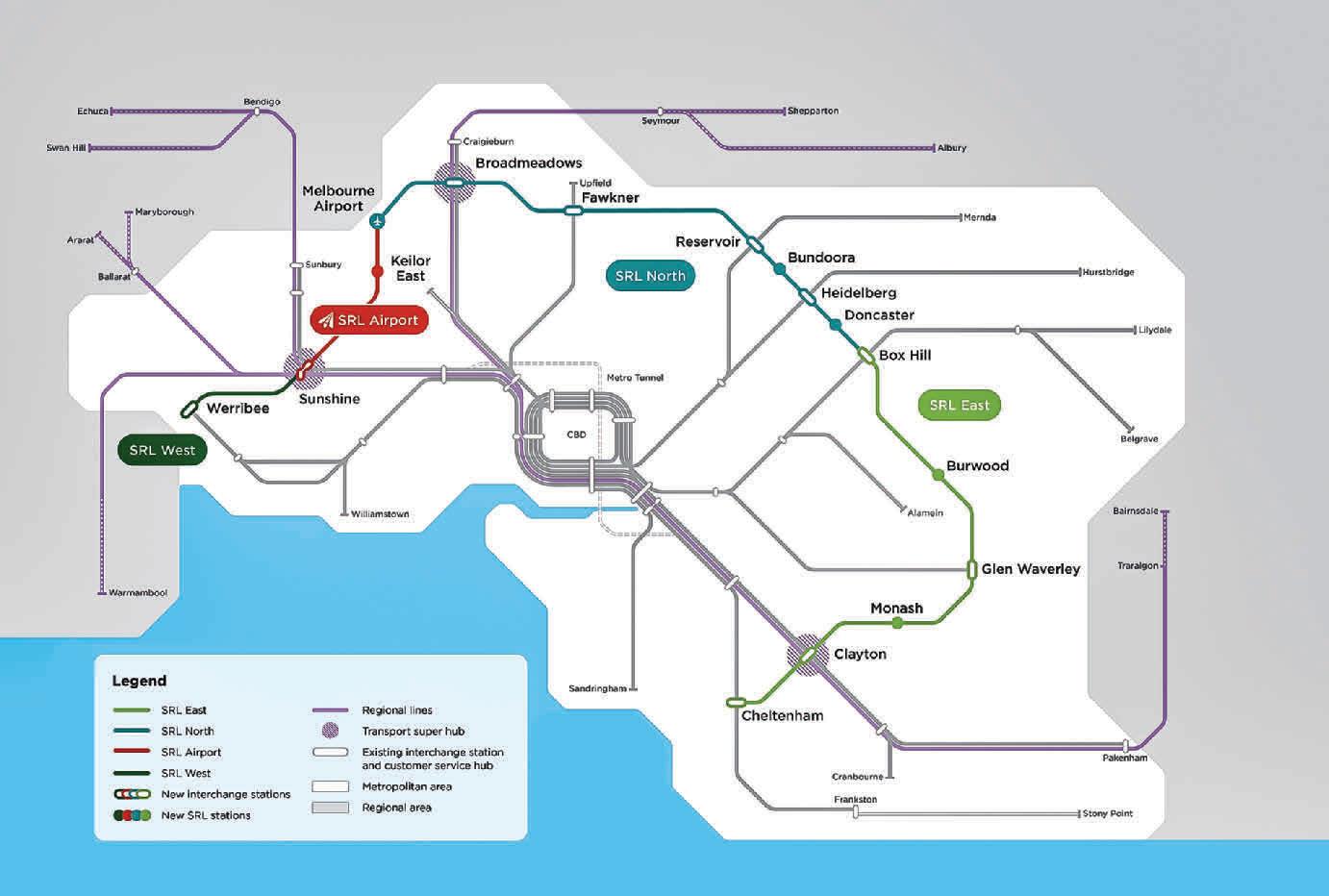
A seminar in February organised by the Institute of Transportation Engineers – Australia and New Zealand section, saw three prominent transport and planning experts dissect and debate the proposed Suburban Rail Loop (SRL).

Professors Graham Currie, John Stanley and Michael Buxton presented their views and answered questions in a public event held at RMIT which was also live streamed, and hosted by Nick Szwed. While the speakers focussed on different aspects of the SRL and emphasised differing points, their conclusions resulted in a deal of consensus on the project, rather than any fiery debate. John Stanley and Michael Buxton opposed the project in its current form while Graham Currie was more equivocal.
The seminar began with Currie, Professor of Transport Engineering at Monash University, presenting some interesting international comparisons of relevant projects. The SRL stood out clearly in relation to all the other examples as the longest, with lowest expected ridership and greatest distances between stations. It was, he stated, clearly different for all the other international comparators. Currie admitted that he admires the ambition to provide high quality infrastructure delivering an expected speed of travel which could rival a comparable car trip, although he felt that the quoted speed was unlikely to be achieved. He also noted with approval that the first phase would personally assist him with travel between his home in Cheltenham to his workplace at Monash University. However, and more seriously, he emphasised two points that were reiterated by the following speakers. Firstly, that the project is massively expensive and secondly, that it has not been carefully planned – or indeed really planned at all. He wondered out loud whether those promoting the SRL had really contemplated the eventual land use changes which might come with the SRL stations, illustrating the point with a photo of high rise apartments over a Japanese underground station.
John Stanley, Adjunct Professor at University of Sydney, whose experience includes years of working on the iterations of Plan Melbourne, also emphasised the lack of connection with Melbourne’s metropolitan strategic plan or indeed any transport plan. He outlined two concepts which are central to Plan Melbourne – the 20 minute neighbourhoods and the National Employment and Innovation Clusters (NEICs). The SRL is designed to link up the four NEICs, however in so doing, they are leaving great distances between stations, and not providing residents along the way with services necessary for a 20 minute neighbourhood. The NEICs do not need to be linked, Stanley emphasised, rather there needs to be radial transport services emanating out from them. Only with such services will the densities needed for 20 minute neighbourhoods to be achieved.
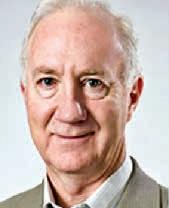
Michael Buxton, Emeritus Professor at RMIT University, focussed particularly on the lack of planning, good process and consultation. He criticised the government’s failure to make clear the urban form of new precincts or to justify their size and impacts despite recognising that the project would transform Melbourne. The need to link employment clusters and the great distances between them, such as 8 kilometres, also needed justification. There would be no benefit to the people living along these lines if they were not close to a station. Buxton was very critical of the lack of transparency and consultation. His long experience in local and state government had shown him that proposals are always improved by gathering input from both experts and the community. Plans drawn up in secret are not only anti-democratic but are inevitably the worse for excluding the views of others.
The seminar included a very informative question and answer session. Public debate on such a massively expensive and long-term infrastructure commitment is important and the organises are to be commended for arranging the event.
Michael Buxton has drafted a paper on the SRL and interested people can contact him at michael.buxton@rmit.edu.au if they would like a copy.
John Stanley has a paper, co-authored with Janet Stanley, on the SRL which can be found at: https://pursuit.unimelb. edu.au/articles/a-big-build-or-a-big-bet
The recording of the event is available via the ITE website at https://www.ite.org.au/
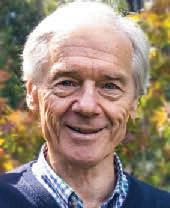
Planners are all too familiar with the idea of review and appeal, but it’s a concept yet to be fully grasped by the custodians of Victoria’s Crown land legislation.
As the Victorian state government heads into a re-write of a suite of Crown land Acts, there’s a principle which we hope DEECA (formerly DELWP) keeps in mind: public sector administrators must be accountable. Many of their decisions should be open to review and appeal – but which decisions, and review by whom?
Public servants are answerable to Ministers, who are answerable to the electorate – but that’s small consolation if you’re a disgruntled member of the public. You want to have your day in the Victorian Civil and Administrative Tribunal (VCAT).
VCAT can deal only with matters specified in some enabling Act. Under the Domestic Animals Act 1994 you can appeal against a council’s decision that your dog is dangerous. Under the Racing Act 1958 you can appeal against Racing Victoria’s refusal to licence you as a jockey. Under the Cemeteries and Crematoria Act 2003 you can appeal against a Cemetery Trust which declines to bury you.
But, as Crown land law stands, there’s virtually no role for VCAT. If DEECA issues a water frontage licence to one landowner rather than to their neighbour, the neighbour can’t go to VCAT. If DEECA decides to discontinue a nearby government road that gives access to a farm, the landowner can’t go to VCAT. If the Yacht Club sublets the foreshore restaurant without going to tender; if one tenant is charged more rent to use of the Crown reserve than some other tenant, the disgruntled party can write to the Minister or phone Neil Mitchell, but can’t go to VCAT.
In some cases, there may be avenues of appeal under administrative law – but that takes us in the direction of the Supreme Court, and all the costs that go with it.
There is no doubt that proposals to issue leases and licences of Crown land can be contentious. To whom should the tenure be issued, for what purpose, and on what terms?
Indeed, should there be any occupation at all, or should the land remain open to the public? Plenty of scope for dissent here: ideal territory for VCAT, surely. But as the law stands, many proposed Crown tenures come under no scrutiny whatsoever.
A compelling example is to be found at Point Grey, near Lorne. Here is a stalled proposal for a restaurant, which
was to be funded principally by one of those grants from the former Morrison Government. With an $8 million handout paving the way, the development was set to pass various tests set by Crown land legislation: the Crown Land (Reserves) Act 1978 and the Marine and Coastal Act 2018 – neither of which involves effective independent scrutiny. However it also needed a permit under the Surf Coast Planning Scheme, and that’s what brought it undone. Council granted the permit, but on appeal VCAT found that, amongst its various deficiencies, the restaurant was not ‘coastal dependent,’ and therefore ran contrary to the Victorian Marine and Coastal Policy.
The planning permit was refused, rendering the other approvals valueless. We would argue that independent review should have been facilitated by the Crown land legislation, without needing to rely on citizens invoking their rights under the Planning and Environment Act 1978
In a bizarre twist, certain Crown leases and licences do come under scrutiny by the Parliament itself – and they are often utterly insignificant. For instance, a proposal for an icecream van in the car park of a flora reserve must lie before both houses of Parliament, where it may be disallowed. That is the consequence of section 17DA of the Crown Land (Reserves) Act 1978.
But it gets worse: consider a straightforward proposal to lease a medical consulting suite in a hospital – or to be more precise, in a part of the hospital complex which happens to be on Crown land. Despite being a permitted use under the relevant planning scheme, such a proposal must also lie before both houses of Parliament. That means months of delay, not only for the commencement of the tenure, but again for every renewal. That’s the consequence of section 69AAE of the Health Services Act 1988
And here’s a further twist. In the 30 years since managers of Crown land have been burdened by section 17DA, never once has Parliament used its power to disallow a proposal. Never once. So, it could be argued, the entire apparatus is nothing but a waste of time.
The Andrews Government has accepted recommendations from the Victorian Environmental Assessment Council: Crown land law should be brought into the twenty-first century. Brought from where? Most was laid down in the nineteenth century, entrenched by the bureaucratic failures of the twentieth century.
The Parliamentary scrutiny clauses come from 1992 in the case of the Crown Land (Reserves) Act, and 2014 in the case of the Health Services Act. Weird: you wonder why the latter provision was made, 22 years after the former provision had proved to be not only burdensome but utterly useless.
We see a dozen matters, over and above those highlighted by VEAC, that are long overdue for review. As discussed in this article, one of them is the issue of appeals to VCAT. Others include reform of the riparian cadastre (Planning News, Oct 2022), processes for reconfiguring little-used road reserves, the ownership of Crown land parcels of purely local significance, the terms and conditions of noncommercial ‘worthy cause’ leases and licences, and the reform of those weird common-law leftovers relating to squatters’ rights.
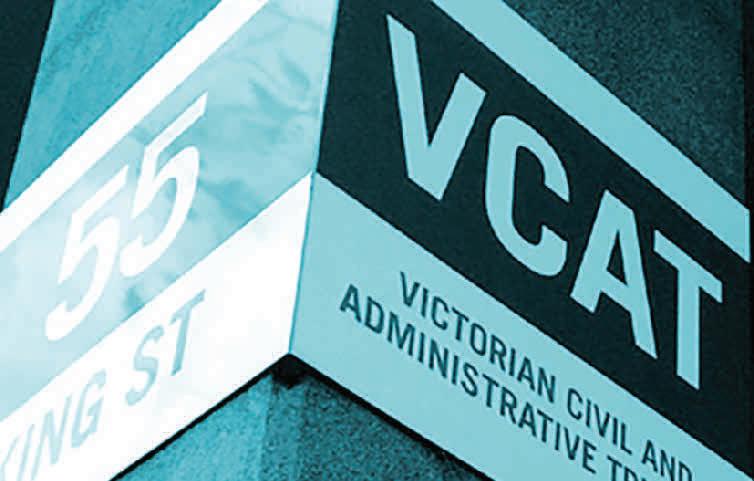
David Gabriel-Jones is Principal of The Public Land Consultancy.

With planning experience in private consultancy, local and State government in Victoria under his belt, an opportunity to flee to the Northern Territory in 2022 was just the ticket for Paris Dickson. Joining the Department of Environment, Parks and Water Security for an initial planning contract has resulted in new opportunities, new skills and new colleagues for Paris.
Name: Paris Dickson
Current role: Senior Planner, Department of Environment, Parks and Water Security, Northern Territory Government
What was it that originally attracted you to study urban planning?
I have always been intrigued as to what makes a city ‘more liveable’ than another, and Melbourne being nominated as ‘the world’s most Liveable City’ was always at the forefront of my mind. I also grew up in the inner north of Melbourne and saw the transition and gentrification of an industrial East Brunswick to a trendy, affluent, ‘yuppie’ suburb.
I have always loved to travel and was introduced to travel from a young age. I grew up for a year in a suburb (Centocelle) in Rome, and saw a completely different environment, with different ways of living. I fell in love with the Piazzas, people watching, outdoor lifestyle and the amount of people socialising and utilising public open space. I travelled to big cities in China, New York, and a lot of European cities all before the age of 18 and noticed the cultural differences and also the differences between built environments.
From there, I was interested in the link between built environment and health and how we can promote incidental exercise and good health measures through planning, promoting walkability, active transport etc.
Was it a tough decision to head up to the Northern Territory and take on a planning position in a different jurisdiction?

The decision was difficult, because I was happy working in my planning job in the Victorian state government in Melbourne. I also have a very close-knit group of friends and family in Melbourne, which made it difficult to leave for an extended period of time. However, my life circumstances meant that it was very easy to make the change. I had very limited commitments, and I think the repercussions of Covid meant (like many) I was seeking a change.
What do you think is a key difference in Planning in Victoria vs the Northern Territory? Has anything surprised you? Is one better than the other
I think the NT planning scheme is more-raw and less refined than the Victorian Planning System. However, it becomes difficult compare due to the vast difference between the territory and the state. Councils play a very different role up here, and all planning decisions are made by the
Territory Government. When you look at the population and landscape differences, I would say that the Victorian Planning System would be too stringent for the NT, however the more ‘laid back’ planning ways of the NT wouldn’t work in Victoria either. I would say that each planning system works best for its given context (although both could be improved).
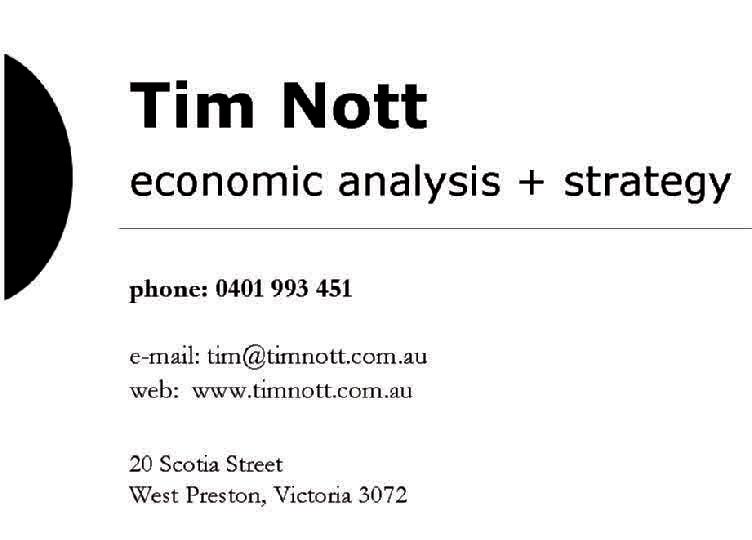
What is the best (or one of the best) pieces of advice anyone has given you in your career?
4 pieces of advice from 4 different people that have had a great impact on my planning career
• Don’t take it to heart – Bernard Collins
• Don’t get stuck in the comfortable – Meagan Merritt
• Someone out there will know the answer – Bianca Coughlan
• To create change, you need to fight for it, and make it clear – Kate Stapleton
Who do you find inspiring and why?
I find a lot of people inspiring, mainly those that are passionate in what they do and try their best at their trade. This extends well beyond planning and I have had the privilege of working with and for many inspiring people. One person that comes to mind is Sandy Green, owner of the Green Refectory, acafé on Sydney Road in Brunswick. Her work ethic and positive attitude, every single day was, and is, incredible. She did this whilst juggling being a mother of two and making delicious cakes and pastries. This embedded the importance of hard-work, maintaining positive relationships and enjoying the day to day work that you do – after all it takes up most of your time.
Those that also fight for important causes such as Adam Goodes and Phil Cleary have also been inspiring figures that I have admired and looked up to. A constant reminder that you should fight for what matters most.
What advice would you give to another young planner thinking about taking the plunge to work in a different State or country?
If you’re thinking about it, then do it! It’s not as crazy or as hard as you think. One minute I was sipping on a strong latte in Brunswick and the next I was driving 4,000 km across Australia with my mother.
Kate Stapleton is Director, Planning and Heritage Practice at the Department of Transport and is also studying Cities at the London School of Economics and Political Science. Email kate.stapleton@roads.vic.gov.au


Plan Melbourne 2017-2050 was an opportunity to plan for the future and realise goals and aspirations proposed for the city. It has an unusually long planning horizon and it is appropriate it be reviewed regularly to confirm the extent to which its goals are being achieved or are realistic in the first place.
In the light of the climate crisis, if the plan is to achieve the aspirations and outcomes proposed, it must look beyond traditional city planning approaches and frameworks which focus mainly on urban form and planning schemes. The plan must broaden its focus and address other issues on which this plan is silent. It must critically examine future scenarios, the risks and threats they pose, particularly to supplies of food, water, and essential goods and services. It must review the concept of liveability more critically and ways in which it can be addressed. It must review its aspirations and expectations in the light of future scenarios and consider the extent to which they are realistic and the mechanisms to be used to achieve these goals. It must also critically review the extent to which the plan has delivered the promises laid out when it was first published, measures used to progress it, the extent to which these have been successful or appropriate and then how it proposes to correct shortcomings. Arguably, without such revision the current plan will do little to resolve existing problems nor address challenges the city faces in the future.
It has become increasingly obvious that our rapidly changing world presents a growing list of threats of all kinds. There is increasing agreement that these threats include:
• Climate action failure
• Extreme weather
• Biodiversity loss
• Social cohesion erosion
• Livelihood crises
• Infectious diseases
• Human environmental damage
• Natural resource crises
• Debt crises
• Geoeconomic confrontation and wars.
There is concern that these present serious challenges and will become increasingly critical in the future. It is also expected all will be mutually reinforcing and have a flow on effect for Melbourne. Whilst many triggers will be social, economic or political in nature, environmental factors will dominate. All of the above, and others, must be critically evaluated and reviewed as part of the plan.

Plan Melbourne has identified a wide range of environmental challenges but underestimated their dimensions, scale and complexity. Nor does it reflect the urgency to act. More specifically the plan must respond to the latest warning that there is only a 50% chance of limiting global warming to
3 degrees - a global average, which for Australia means 4 degrees and will be unlivable. This warning should remind all planners that climate change must be treated as a top priority, actioned as a matter of urgency and must be reflected in Melbourne’s city plan.
It is argued this scenario justifies renaming the plan: Plan Melbourne – 2017-50 Living in the Hothouse. It requires an adaption plan for life on an increasingly inhospitable planet, a world of declining fortunes that supports fewer and fewer people. This has implications for the ability of the city to provide food, water and other essential goods and services, many of which are taken for granted but are essential for the well-being and livability of the city or even its survival. The current plan outlines some of these but fails to acknowledge the dimensions, scale and complexity of these issues, implications for the city and the urgency to act.
Failure to provide essential goods and services, particularly food and water, has been the reason most societies and civilizations have collapsed in the past and will determine a city’s fate in the future. A report by the Round Table on Global Food Security for The Commission for the Human Future noted in June 2020 that “industrial food production, as practiced today, cannot be sustained in the longer run. It causes massive land degradation, wastes water and overuses toxic chemistry; it generates 30% of the world’s greenhouse emissions; it is exceptionally vulnerable to a changing climate.” Plan Melbourne is silent on this and must address it.
Plan Melbourne includes measures to improve liveability, expressed in terms of social environment, connectivity, 20 minute neighbourhoods, well designed and affordable housing for all, but ignores fundamental factors that determine whether people can live in them in the first place. The decline of green canopy means Australian city dwellers face a much hotter future. The challenge is particularly severe in new housing developments in Melbourne’s northern and western suburbs. Establishing shade trees in these areas, starved of moisture because of extensive paving is problematic. Even if it is possible to plant trees, roots will cause extensive and widespread damage to housing structures. These suburbs face a bleak future and will end up becoming unliveable ‘dead’ zones where no one lives.
Plan Melbourne claims that “the city’s transport network will need to cater for around 10 million more trips a day, an increase of more than 80%” which assumes continuing population growth and mobility, neither of which is sustainable. The transport sector is a large and growing source of greenhouse emissions and continues to lag most sectors in emission reductions. A 50% reduction target for road transport GHG emissions (by 2030, based on 2005 levels) is potentially achievable using a combination of extensive behaviour change measures and technological improvements. Getting to zero for this sector is impossible. Active transport is the only mode that can achieve this for personal travel and none of the other modes for travel or transport come close.
The transport paradigm needs a total rethink, particularly for personal travel. As Moriarty and Honnery point out in several articles and a book which have been the subject of a short paper1
“The number of passenger kilometres per person per year exploded by a factor of 240 between 1900 and 2018. This overall 240-fold rise is extraordinary, considering the less than five-fold global population increase over the same
period. It is even about 30 times the growth in real global GDP.
The global average for motorized travel is now about 6,300 km per person per year. At the extremes, however, US residents average over 30,000 km per person per year, while in some countries the average is only a few hundred km per person per year.
Could the high degree of mobility now standard in the US be extended to the whole world’s population? Not likely. Moriarty calculates that if each person in the world were to travel 30,000 km per year in motorized transport, world transport energy levels alone would be about 668 EJ, greater than global total commercial energy use of 576 EJ for 2018”.
It should be noted that of all typical modern travel modes, air travel is the most environmentally damaging and least sustainable. New technology and improved vehicle efficiency will not resolve this problem. The imperative is to travel less and less often and by a large factor. There are numerous ways in which this can be achieved. None are politically easy but must be addressed in a revised Plan Melbourne.
Finally, there is no adaption plan from the carbon economy that underpins the global economy or strategies for implementation. This has profound implications for all elements of the economy and may result in severe shortages of everything, including energy and blackouts in the future.
Climate change is recognized by the City of Melbourne and other councils as a major threat, and supported by numerous strategies and plans at a local government level, but a more radical approach is required because emissions continue to rise and environmental indicators overall are not improving.
Plan Melbourne 2017-2050, like most of its predecessors, is an aspirational document. It acknowledges some of the challenges confronting the city but most of the assumptions that underpin this plan are based on a continuation of business as usual. Little attempt has been made to assess global trends, future scenarios and threats these pose for the city. The dimension, scale and complexity of
RMIT Architecture and the Alastair Swayn Foundation have joined forces to offer a new international fellowship for Australian architects, landscape architects and design professionals looking to advance their practice.
Providing the opportunity to spend eight weeks at the American Academy in Rome, the inaugural Alastair Swayn Foundation-RMIT Architecture (ASF-RMIT) Affiliated Fellowship supports the growth and development of early to mid-career designers who are emerging leaders in their fields.
The Fellowship is open to early and mid-career Australian architects, landscape architects and design professionals. Successful candidates will not only be outstanding in their respective field, but also at a point in their career where the Fellowship is likely to be crucial to their future growth and development.
environmental challenges and threats are understated and responses are superficial and totally inadequate. The plan is silent on important issues such as food, water, and the capacity to fund and maintain essential services and infrastructure. Liveability is an important issue and the plan proposes a range of strategies to address it, but remains silent on critical issues that determine the extent to which people can live in their neighbourhoods in the first place, ways in which this can be addressed and mechanisms to achieve this. It is argued that the plan as it stands will do little to resolve existing problems and address challenges the city faces in the future.
Few countries have a national strategy for their cities and only a handful of these speak meaningfully to both climate action and human development. Melbourne must become one of these and recognise that adaption will require a profound and radical change in the city and the way it functions. It must also plan for population and economic decline which will become inevitable as the planet becomes locked into an irreversible hot house trajectory. This will demand new strategies driven by very different expectations for the city and a mindset that focus on the essentials for survival ie liveability, provision of essential goods and services including food and water, and maintenance of community cohesion and preservation of institutions that under pin civil society.
This must be supported by a new economy in which people are forced to consume less of everything, including transport, quickly reduce greenhouse emissions and place a high value on the restoration of the biosphere that supports all life (including humanity) on this planet. None of this can be achieved over night. It will require a transition plan from the carbon economy which underpins the global economy. Whilst a city cannot achieve this on its own, it must reflect all of these in its city plan with actions to achieve measurable outcomes that can be monitored and enable political leaders to be held to account.
1 Hypermobility Hits The Wall by Bart Hawkins Kreps, originally published by An Outside Chance, 23 August 2022
Roger Taylor is Chair of Transport for Melbourne.
The American Academy in Rome is a leading centre for independent studies and advanced research in the fine arts and humanities. In this setting, the Affiliated Fellow will work towards a specific project of their choice, cultivating their practice and making new interdisciplinary connections in the creative city of Rome and its surrounds.
During their time at the Academy, the Fellow will work towards undertaking a specific project and will deliver a public lecture on the outcomes in Australia, upon their return. The Fellowship provides eight weeks of room, board, and a stipend (or funds for travel) of $7,500 to be used at the Fellow’s discretion. The Fellow will undertake their eight-week residency between September 2023 and end July 2024 with specific dates to be negotiated with the successful applicant and the AAR. The project is not required to be associated with Italian topics.
Applications for the inaugural ASF-RMIT Architecture Affiliated Fellowship are open until Wednesday 15 March 2023. For more information and to apply visit the RMIT website rmit.edu.au/asf
 Compiled by Danai Fadgyas MPIA
Compiled by Danai Fadgyas MPIA
A new, underwater bike garage has recently opened at Amsterdam’s Central Station in the Netherlands. Costing $65.3 million USD, the underwater garage adds to the Netherlands’ already extensive cycling infrastructure, with capacity to store up to 7,000 bikes.

The new bike garage can be accessed via a curving ramp from the station’s ground level, and is the final component of a larger program of renovation works at the historic station. These works have also seen the removal of some above ground roads, to allow more space for pedestrians and bikes.
The underwater bike garage project has been undertaken as part of the Netherlands’ efforts to make the connections between cycling infrastructure and rail transit smooth and simple. These facilities also encourage cyclists not to park bikes on city streets, also contributing to making streets more pedestrian-friendly.
https://tinyurl.com/2op8gftd
booths a second life. Some booths have been transformed into food stalls during Lunar New Year festivities, offered to entrepreneurs free of charge to sell food and souvenirs in an effort to boost the local economy and promote tourism. Others have been converted into libraries, where people can donate and read books, while some booths have become hubs for essential services and workers.
It is unknown if the repurposed booths will only be temporary, but for now it is hoped that they may contribute to revitalising urban life in Chinese cities.
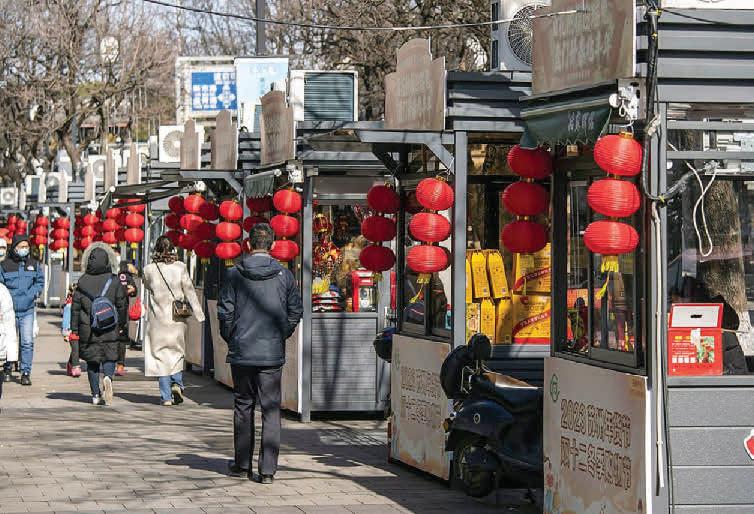
https://tinyurl.com/2mf4h9la

In China, tens of thousands of former Covid PCR testing booths are being repurposed as libraries and food stalls. After the country ended its Covid Zero policy, the testing booths were left empty. The rollout of the booths cost China around $30.1 billion USD, and cities are now seeking ways to recoup some of these expenses.
While some of the booths have been abandoned, listed for second-hand resale, or sent to rubbish tips, many local governments have been looking for creative ways to give the
The Camden Highline is one of London’s most exciting revitalisation and regeneration projects, and last month the first stage of development was granted planning approval. Resembling many similarities to its famous New York counterpart, the Camden Highline will provide 1.2km of green, linear open space along a disused railway line running between Camden Town and Kings Cross. The development of the Highline is expected to bring green open space to more than 20,000 people and provide £5 million worth of social and health benefits.
The project was inspired by a community-led initiative which started as a crowd funding campaign back in 2017 to improve biodiversity and access to green open space in Camden Town. Over a period of 4 years of extensive public consultation and lobbying, a team of world-class architects, designers and landscape specialists were assembled, including the lead designer firm responsible for the New York Highline.
The Camden Highline will be fully accessible and have a range of ‘destinations’ along the route including viewing platforms, children’s play areas, an outdoor classroom and trainspotting hub. The first stage of the project is anticipated to open in 2025.
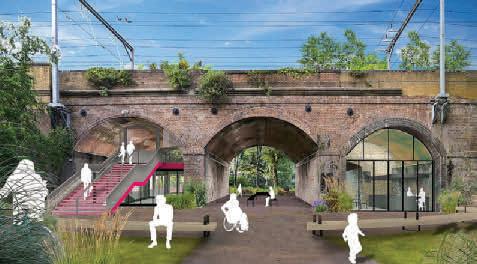
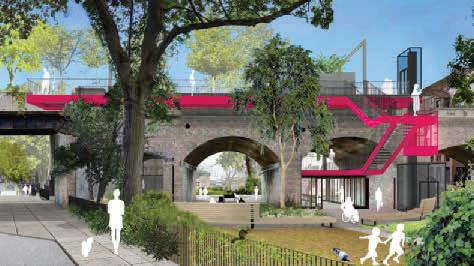

https://tinyurl.com/2n8lsmza
https://www.camdenhighline.com/
 Compiled by Francesca Soler MPIA
Compiled by Francesca Soler MPIA
One step to addressing the escalating housing demand in the state is freeing up public land for new homes through Housing Land Supply Orders (HLSOs). These are basically acts of parliament designed to fast-track certain parcels of land for development. Rather than creating new estates the construction of these new homes will be on land that is interspersed among existing dwellings.
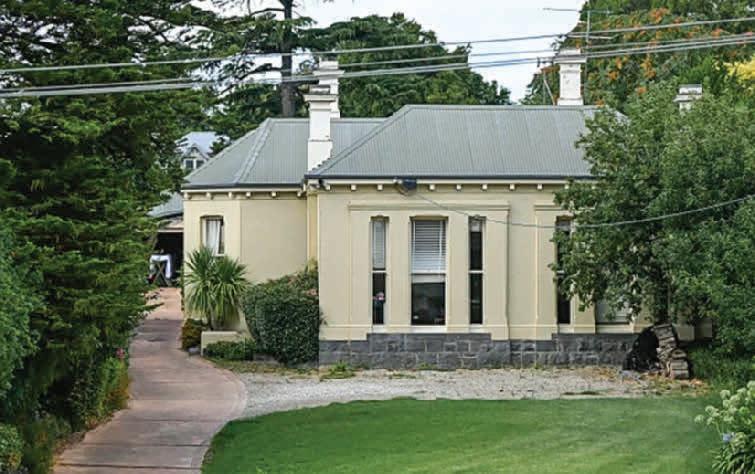
There is a push from the state opposition, Boroondara Council and residents to grant heritage protection to a 141-year-old house on one of Hawthorn’s oldest streets. 76 Wattle Road is facing demolition to make way for 9 three-storey townhouses. The property was owned by the prominent Kroger family until 2015 and has been the subject of a lengthy heritage and development dispute at the Victorian Civil and Administrative Tribunal.
Boroondara Council rejected the application for the proposed townhouses in September due to the proposal’s impact on neighbourhood amenity and streetscape. However, the developer is fighting the council’s decision at VCAT
In 2012 a Boroondara Council commissioned heritage study did not propose to list Wattle Road as a precinct, but noted several potentially significant properties that should be considered for protection, including number 76. In 2014 a heritage overlay was not recommended. Last July councillors voted to support a new heritage assessment, however the then Department of Environment, Land, Water and Planning rejected the permanent heritage request because there was not “sufficient new evidence” to justify protecting the property. A spokeswoman from the Victorian government said that Planning Minister Sonya Kilkenny and the Department of Transport and Planning would assess a council proposal for an interim heritage overlay.
https://tinyurl.com/2fouvdmr
State housing minister Guy Barnett has said that Homes Tasmania was analysing the more than 4000 people on the public housing waiting list to establish the demographics and needs of applicants. The data will be used to inform Tasmania’s 20-year housing strategy with plans for specific groups such as those living with a disability or for families. For now, more than 100 hectares across the state have been identified as surplus land suitable for affordable housing. Developments are planned all over Tasmania including areas such as Newnham, Ravenswood, Kings Meadows, Burnie, Devonport, Huntingfield, and Hobart’s northern and eastern suburbs.
https://tinyurl.com/2q2nydq7

A range of medium-term and long-term solutions to address the current high demand for housing have been developed by the Tasmanian government. It has committed to build 10,000 new homes by 2032 to ease the escalating pressure.
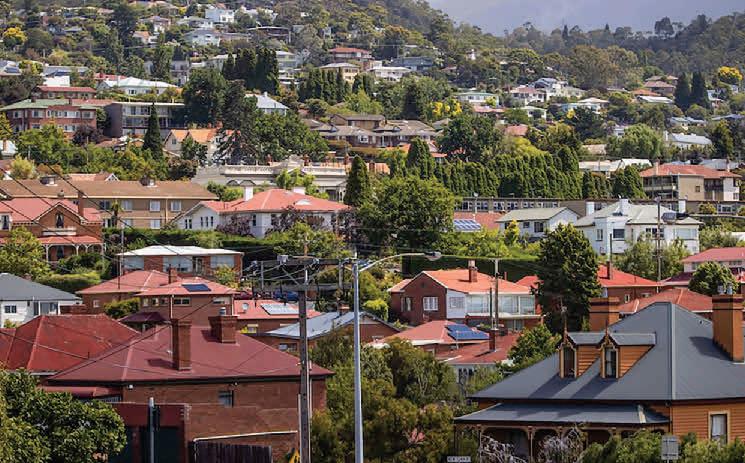
On the corner of Grattan and Cardigan streets in Carlton there is a 1970s parking lot in the brutalist architectural style that is set to be heritage listed. The carpark is slated for heritage protection due to its local aesthetic significance and representative value, however there are objections from the suburb’s residents. The seven-storey car park was built in 1974 and was the Royal Women’s Hospital car park for many years.
The independent Planning Panels Victoria’s report into the review found that there was “sufficient justification” for the application of a heritage overlay to the car park. President of the Victorian chapter of the Australian Institute of Architects, David Wagner, said it was important to protect brutalist buildings in order to preserve the development of architectural language. He said the car park was “quite something” and had the strengths of geometry and rhythm that were characteristic of brutalist architecture.
Some local residents have voiced objections, including one that opposed the heritage listing on the basis that the land would be better used for housing. Another resident has said that they did not understand why the car park would get heritage protection as.
The next step in heritage protection for the car park is for the Carlton Heritage Review to be considered by the City of Melbourne this year.
https://tinyurl.com/29nyvccu
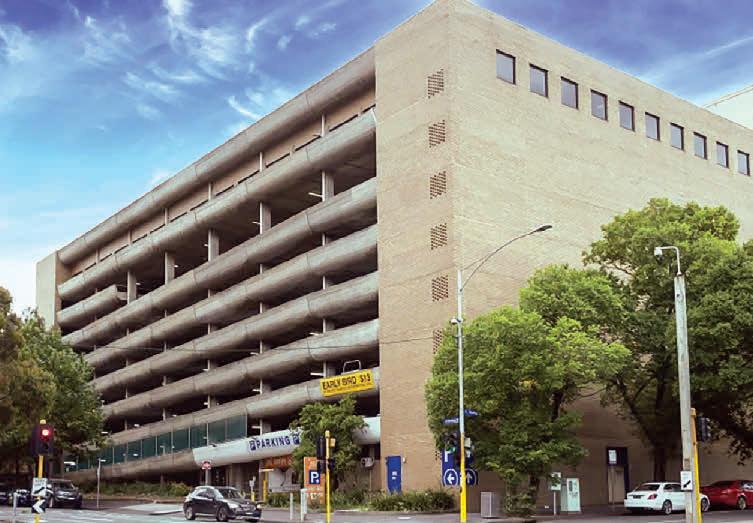
Unapproved clearing of land in a small coastal town on Bruny Island has occurred leaving neighbours furious. Trees were cleared by heavy machinery on a private block of land in Dennes Point in July before plans were submitted for a housing subdivision. Neighbours say they were not informed beforehand and the clearing has impacted local wildlife. They have observed that it has resulted in fewer quolls, wallabies and native birdlife activity in the area. The land clearing on the 3.5 hectare property has resulted in the loss of three white gums, which is an important species for the survival of the critically-endangered 40-spotted pardalote. The trees were located on a substantial slope, with a row of neighbouring houses at the bottom. One of the owners of the neighbouring houses has expressed concerns for water runoff without the vegetation as a buffer, with excessive pooling reported during heavy rain last spring. A landslide assessment was completed in March 2022 by the developer which noted a risk of less water infiltrative the soil should soil disturbance occur.
The development application for the 10-lot subdivision was advertised with Kingborough Council earlier in February. A bushfire hazard management report was included which noted that none of the white gums or casuarinas on the property need to be removed, provided there was 2 metres of separation between canopies. However these were among the trees that were removed.
A $2,715 fine was issued to the landowner, but neighbours on each side of the land believe the fine was disproportionate to the financial gain should the subdivision occur.
Bruny Island is noted for providing a sanctuary for various endangered flora and fauna, due to its separation from mainland Tasmania. Commonwealth and Tasmanian government documents note that the removal of single trees can potentially impact the bird species.
https://tinyurl.com/2pxwqcs7
President
Gabby McMillan MPIA
Vice President
Ed Riley MPIA
Vice President
Jane Keddie MPIA
National Director
Nicola Smith RPIA (Fellow)
Vic Young Planner Convenor
Maddi Marks PIA (Assoc)
Women's Planning Network (WPN) Convenor
Akemi Traill MPIA
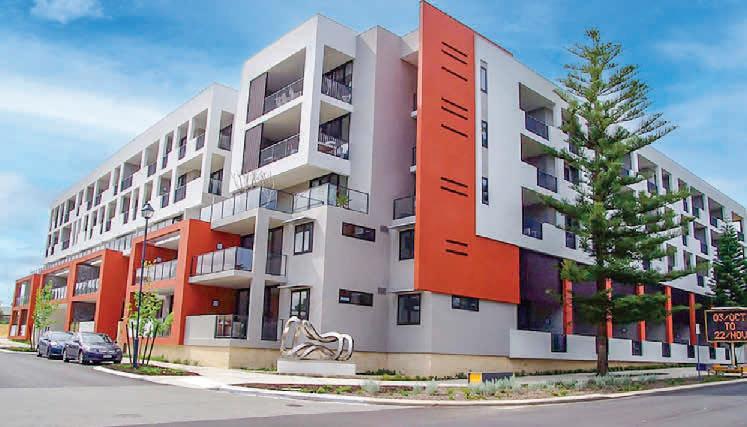
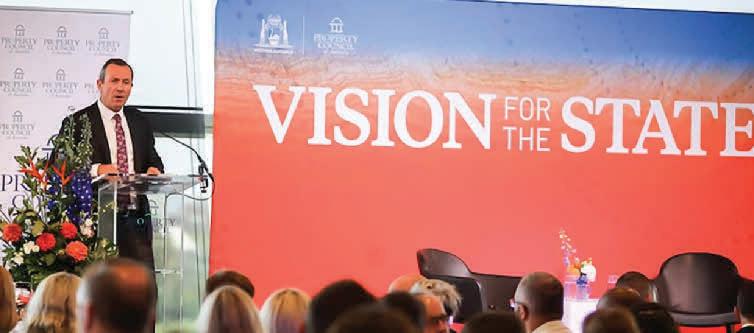
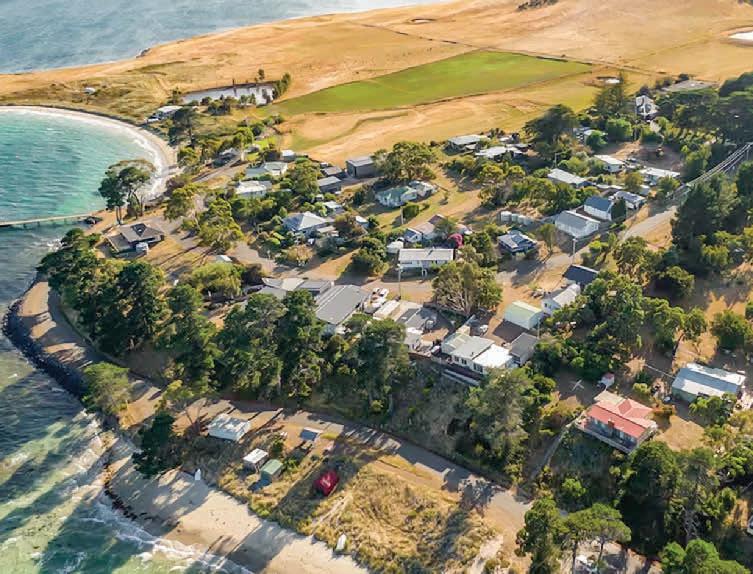
The WA government have proposed major changes to planning laws that would cut out local governments from development approvals in their area and give property developers access to new infrastructure funding. The opposition have said the McGowan government are targeting wealthy western suburbs. WA Minister for Planning, Rita Saffioti defending their proposal by stating, "What we have in some instances is councils who don't update schemes, whose thinking behind that scheme is 20 years old and then they say, 'Oh well it's not compliant with the scheme.’ Well your scheme is not compliant with the legislation.”
Changes to planning laws include increasing the amount of projects that can be reviewed by Development Assessment Panels instead of local councils and a new infrastructure fund designed to speed up the construction of apartments. https://tinyurl.com/2jjvucor
Committee Members
Patrick Fensham MPIA (Fellow)
Nikki Hill MPIA
Emily Hobbs MPIA
Kirsten Kilpatrick MPIA
Kim Marriott MPIA
Noel Matthews MPIA
Estella Qing MPIA
Melissa Thyer MPIA
Michelle Wang MPIA
Adriano Zarosinski PIA (Assoc.)
President
Michael Purves MPIA
Vice President
Darshini Bangaru MPIA
National Board Director
Emma Riley RPIA (Fellow)
Tasmanian Young Planners Convenor
Apurva Bora PIA (Assoc)
Women's Planning Network (WPN) Convener
Rachael Huby PIA (Assoc.)
Committee Members
Jason Byrne MPIA (Fellow)
Bunfu Yu MPIA
Julia Bell MPIA
Iain More MPIA
Andres Perez-Roca PIA (Assoc.)
Claire Fawdry MPIA
Sandra Hogue RPIA (Fellow)
Daryl Connelly PIA (Assoc.)
Lucas Paterno RPIA
Emily Killin MPIA



#EmbraceEquity





Thu 16.3.23 |7:30am - 9am
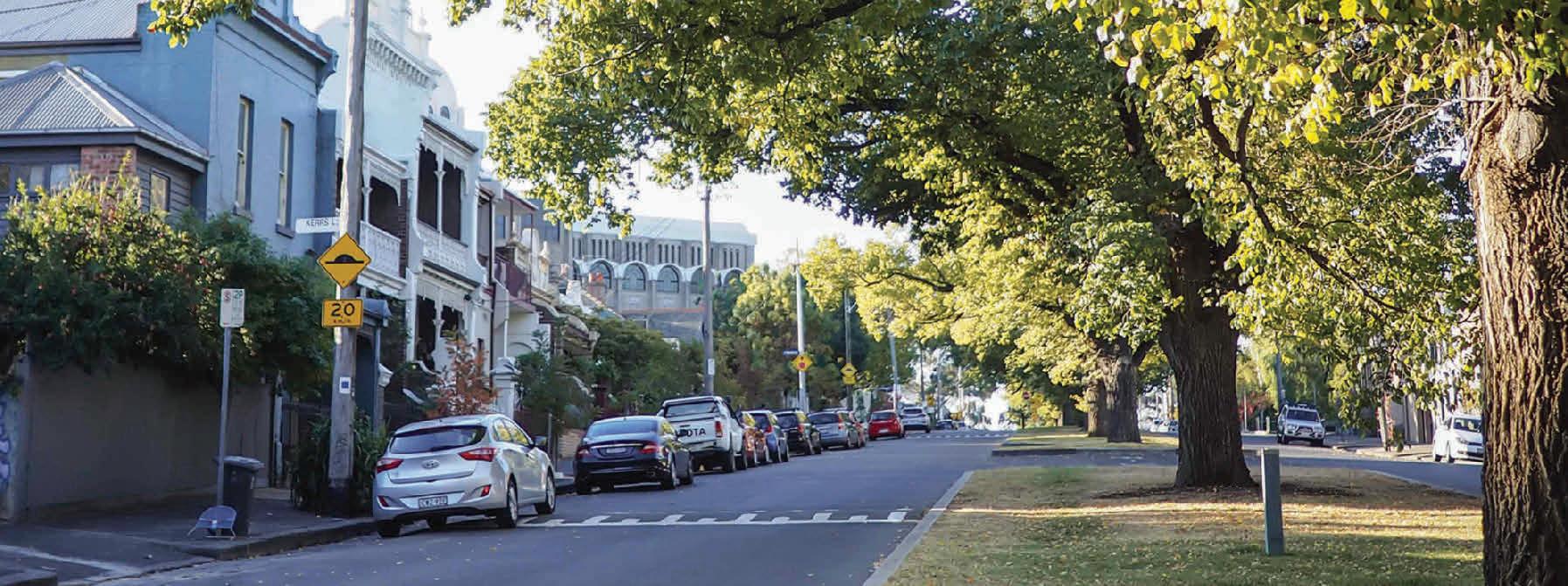

Fri 24.3.23 |7:30am - 9am


As part of this year’s International Women’s Day celebrations, we are hosting a series of in-house discussions focussed on how to innovate our planning and design practices to ‘crack the code’ for a gender-inclusive built environment.


#EmbraceEquity #Cracking the code
